Croatia Part 3: From Split to the Prevlaka Peninsula
The Deep South of Croatia (9)
From Split we reached Vela Luka on Korčula Island (279 km²) within three hours and passed the coastline of the popular holiday islands Brac and Hvar. The 48 km long Korčula Island is called the green island due to its dense pine forests and unfortunately it is also quite hilly. From the pretty town of Blato we followed a steep road to the other side of the island and drove back down to the coast.
It started to get dark and we couldn’t find a decent camping spot. As always it is hard to find a flat place in the green on the Croatian islands and the attractive lonely beaches are usually 100 m below the main road and hard to get down to and back up from. We started cooking our dinner in front of a closed hotel complex at a small beach and opposite a very tiny peninsula with a walking path. Even though it wasn’t beach weather anymore and started to get dark, there were still some people on the beach and children running around the peninsula. But it was too late to drive any further and so we waited until it got dark and then cycled very fast over to the peninsula and pitched our tent on the only flat area available - a children’s playground. As we were lying in our sleeping bags already, we heard two elderly ladies passing by. We held our breath and turned the lights off, as if that would change anything. They saw us and talked about us camping there, but fortunately they left without calling the police and we felt asleep peacefully.
The next day we cycled up a hill with nice views of the coastline and arrived in the small village Smokvica, known for olive oil and the production of quality dry white wine. We like those tiny villages, where not much is taking place, just some old men sitting in the only coffeeshop available and greeting the passing neighbors. What a contrast to the touristic coastal towns.
The city of Korčula, birth place of Marco Polo, is such a touristic place usually. But due to COVID-19 it felt pretty empty and not many people were walking around the medieval alleys in the mighty old town. The cafés, souvenir shops and restaurants were still open though and eagerly waiting for some tourists to arrive. We talked to the owner of an oceanfront restaurant in prime location. He told us, that they are considering closing for the season in September already, one month earlier than usual. It is bitter to see destinations mainly depending on tourism and you realize how fragile this system is in times like 2020.
We cycled to the town of Lumbarda that offers two sandy beaches and that is quite rare in Croatia. On the end of a peninsula we found a wonderful place to spend the night and we could even sleep without our tent listening to the waves and looking at the stars.
Meet Mljet - our favourite Island
We were only three days on Korčula, which wasn’t nearly enough. But somehow we felt like continuing and spending more time on Mljet instead. From our beautiful spot on the ocean we cycled back along vineyards to the port in Korčula and were surprised to pay CHF 60.- for the quick 30 minutes ferry ride to Pomena on Mljet. That is quite expensive, but there was no other option to reach Mljet directly from Korčula and we also wanted to visit the National Park close to Pomena.
The Mljet National Park encloses the northwestern part of the beautiful Mljet Island. Shortly after leaving Pomena we paid our entry fees and left the main road and reached the center of the National Park: two connected shimmering saltwater lakes in the midst of a dense pine forest. What a stunning scenery with intense blue and green colors. In the middle of the bigger lake, Veliko Jezero, is small St. Mary’s island with an old Benedictine Monastery. A ferryman brings visitors over to the church complex and a cute restaurant. We wanted to cycle further that day, but time passed really quickly in the fantastic National Park and we only made it to the small village Polače.
In the early morning Dario kindly offered to pump our tires and we started cycling towards Saplunara on the southern tip of Mljet. But after only a few kilometers, Dario’s tire looked like it was steaming and we had to stop immediately. It was hot already and no shade in sight, as usual when we have to fix our bikes. We put our luggage away, exchanged the tube and then started looking at the tire very intensely and realized we probably damaged it already on the second day of our trip, because it was rather tricky to get the tire off the rim and we used too much force. We tried to fix it for about three hours and then continued our trip and after another 10 kilometers Dario faced another flat. We already spent the most part of the day exchanging and repairing tubes and trying to fix the tire so it would last for another day. Needless to say, it was very frustrating.
We realized we would never make it to Saplunara like this and so we gave up and ordered a Taxi that brought us, the bicycles and all our luggage there. It was a pity, because the landscape was absolutely gorgeous and we desperately wanted to cycle the whole stretch. But somehow it wasn’t meant to be that day. Lisa quickly booked an apartment for the next days in Saplunara while we were sitting in the Taxi.
At least our Apartment surrounded by olive, lemon and pomegranate trees was a highlight for us and we used the time to work on our website and to enjoy the stunning beaches. We could even go swimming directly in front of our accommodation, the water was crystal-clear and calm. Every morning we could ask the grandmother of the owner for a coffee, she spoke very good French and was always up for a chat and it felt like home. We could have stayed much longer in sleepy Saplunara. There are about three bars, a supermarket and of course the wonderful beaches. There were a few apartments but no big hotel complex in sight. The nice family running the apartment also owned a restaurant, that was very popular in Dalmatia and known for its seafood specialties and the signature dish of Croatia’s Dalmatia Region - Peka. The Peka is a bell-like dome and under it a blend of vegetables and meat/seafood drizzled with olive oil is baked to perfection for several hours. All the ingredients came directly from their own garden or the sea. Very delicious!
But wait, what about the tire? Well, we couldn’t find a bicycle shop with spare tires on this small island and we didn’t want to take another taxi to the ferry port so we had to be creative. Dario sewed the tire back together and it worked! We also heard from other cyclers that dental floss should be very durable, so we’ll think of that the next time we damage our tire.
The second longest wall in the world
Dario’s tire was repaired for the moment and we dared to go back on the road and finally experience the scenic route on Mljet from our saddle. We started at six o’clock in the morning and it was so peaceful pedaling on traffic-free roads and seeing the sunrise in the distance.
We took a ferry back to the Croatian mainland and to the hilly Pelješac peninsula. This peninsula is relatively unpopulated and famous for its red wine, oysters and the second longest wall in the world. The small town of Ston not only offers a salt saline, but also the longest fortification wall in Europe and second only to the Great Wall of China internationally. It was built in the 14th century and 5.5 km long and connects Ston and Mali Ston. And it really reminded us of the famous Great Wall with all the towers and we would have never expected this here.
It was another hot day and we didn’t go for a walk along the wall and had a breakfast break instead and continued cycling through the dry landscape full of vineyards and olive groves towards Dubrovnik. Along the road were many signs promoting local wine and we could have easily spent a day with wine-tasting. Maybe another time we’ll come back and explore this beautiful peninsula, but today we wanted to ride a little further.
Unfortunately, that day things didn’t work out as planned. At dusk, Dario’s tire got damaged again. While Dario was sewing the tire on the roadside, Lisa unsuccessfully cycled around to find a camping spot. In those moments, when you are tired and hungry it is hard to make decisions and you easily keep blaming each other for the situation. In the past weeks we learned to remain flexible in those moments and not to follow through with certain things (i.e. camping that night). In the end we rolled down to the fishing village Zlaton and asked around for an apartment. We quickly cooked Pasta, drank a beer on the balcony and suddenly everything felt right again.
Dubrovnik without the crowds
We followed the coastal road and over an impressive bridge we reached the abandoned cruise ferry port of Dubrovnik. We were in contact with a local cycling tour operator and they were so friendly and gave us a spare tire for emergencies and some tubes. It was a mountain bike tire, but still better than nothing and we would have to order the right Schwalbe tire when we stay somewhere for a longer time.
On the same street as the tour operator was also a museum that gained our attention – the Red History Museum. This newest Dubrovnik Museum is situated in a former industrial hall and explains about life in Croatia under the communist rule of Yugoslavia in an interactive and entertaining way. You learn more about the history but also about the effects of a communist regime on everyday life, from design and architecture to music and sex education and it also contains a replica of a typical socialist flat in the 70s and 80s. Through an additional App we could also hear the original news announcing Tito’s death or a commercial spot for Bras. Definitely a unique time capsule.
Now it was time to discover the famous old town of Dubrovnik. Dario has visited the city almost 20 years ago and Lisa wanted to see Dubrovnik for a long time, but gave up on that idea in the recent years due to overtourism. No one wants to explore a place surrounded by shuffling groups being led by umbrella-hoisting guides. The entire city of Dubrovnik has about 42’000 inhabitants, but 20 times more in summer and only about 1000 people live in the rather small old town. Dubrovnik has always attracted the tourists, but since they were shooting “Games of Thrones” here, the number of visitors kept growing about 10%. The rental prices increased and instead of grocery stores you find restaurants and souvenir shops. Nearly a million cruise passengers descend on Dubrovnik each year and one some days 9000 passengers struggle to get inside the old town. We heard that the remaining locals, who haven’t rented out their apartments during season, would follow a Live-Stream of the tourist masses strolling through their town in order to decide when it is a good time to go out. But this year, everything was different and the streets of Dubrovnik almost seemed deserted in comparison.
We just wanted to make a short stop in Dubrovnik, but the idea of experiencing one of the most beautiful European cities without the crowds, seemed very attractive and we decided to stay for one night. We walked through the old town with its magnificent buildings, churches and palaces.
It is no surprise that the “Pearl of the Adriatic” is so popular, it is filled with beautiful scenes around every corner. We were too late to wander along the well-preserved city walls, but it was still nice to discover the alleys and impressive squares and of course there are many fine restaurants to choose from and you don’t have to fight for a table. We are very grateful that we were able to experience this city like this and we probably don’t come back and rather keep the memory of a Dubrovnik as it maybe once used to be.
Our last evening in Croatia
After 26 days we didn’t want to leave Croatia without a worthy finale and we decided for a scenic and less frequented route. The most direct way from Dubrovnik to Montenegro goes via the main road, but we opted for a trip to the unspoiled Prevlaka Peninsula in the deep south of Croatia. There was no infrastructure for kilometers and we were short of water. Dario was a gentleman and drove down the coast for 9 km to a town for a refill. Now we were ready for our last night in Croatia. We found an ideal camping spot close to the ocean and we could even see the border to Montenegro on the other side. This border just reopened after months of construction. We hoped that we could enter from there and don’t have to cycle all the way back to the main road. But for now, we enjoyed our last evening. Suddenly, a car stopped and we already worried that we would have to leave our spot, but the friendly driver just told us, that we shouldn’t make a fire here. After a while he came back and passed us two cold beers with the words “Welcome to our paradise”. He also informed us, that sometimes a herd of goats comes around and well, we were happy to see them right on time before we left. What a perfect finish to our tour through Croatia.
We truly loved our time here discovering all the charming Istrian villages, the beautiful islands and seeing those intense blue and green colors every day.



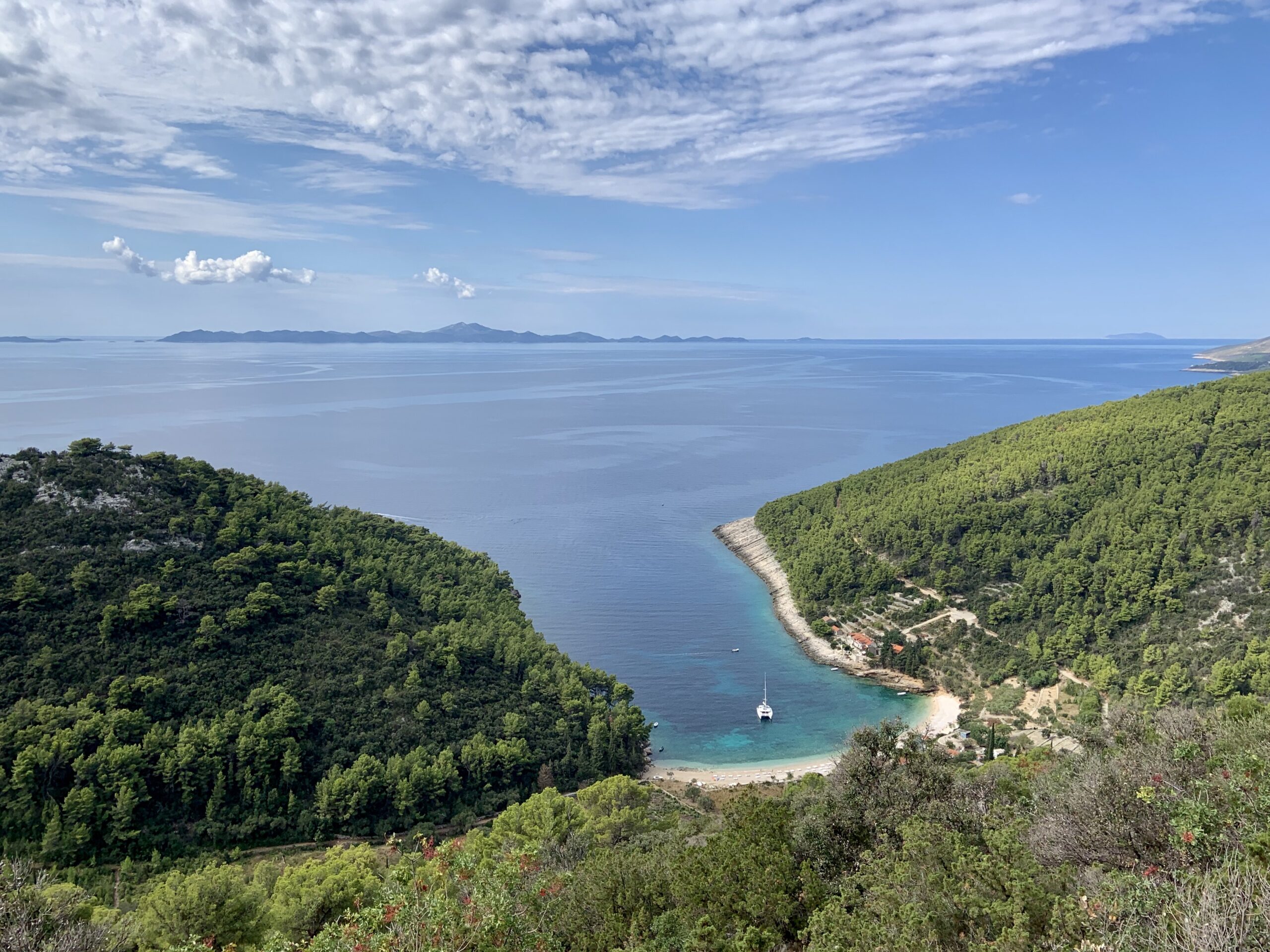
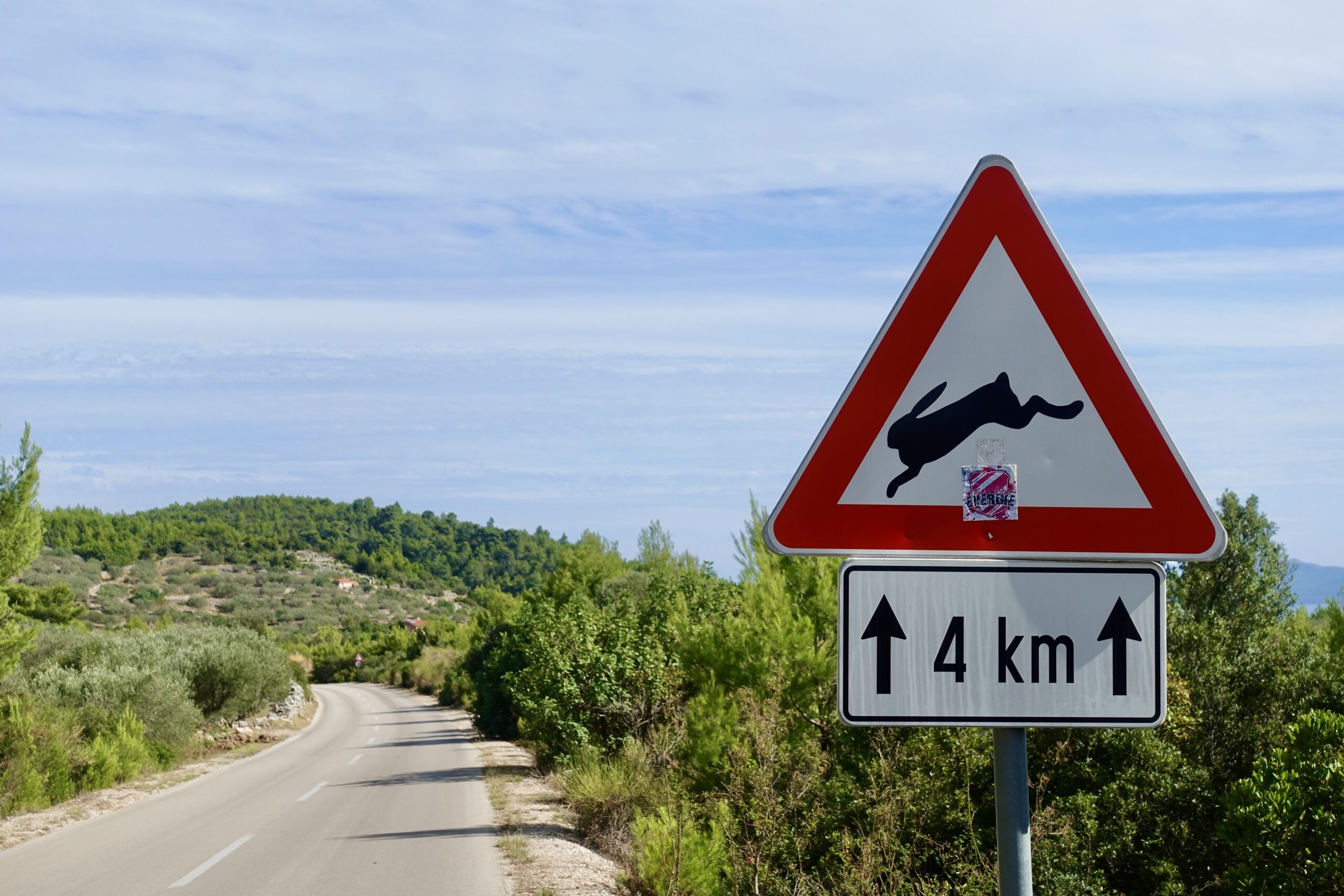

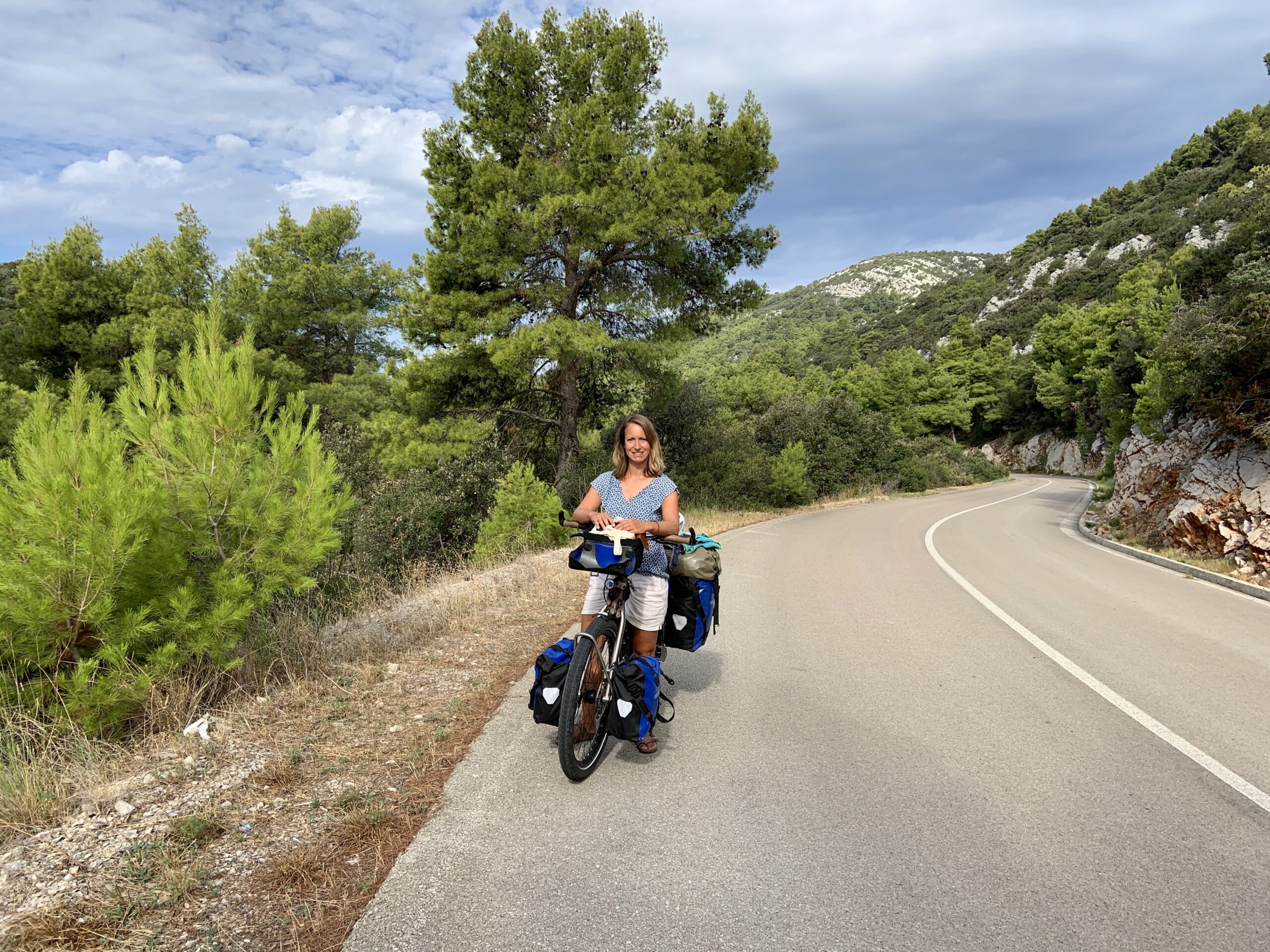


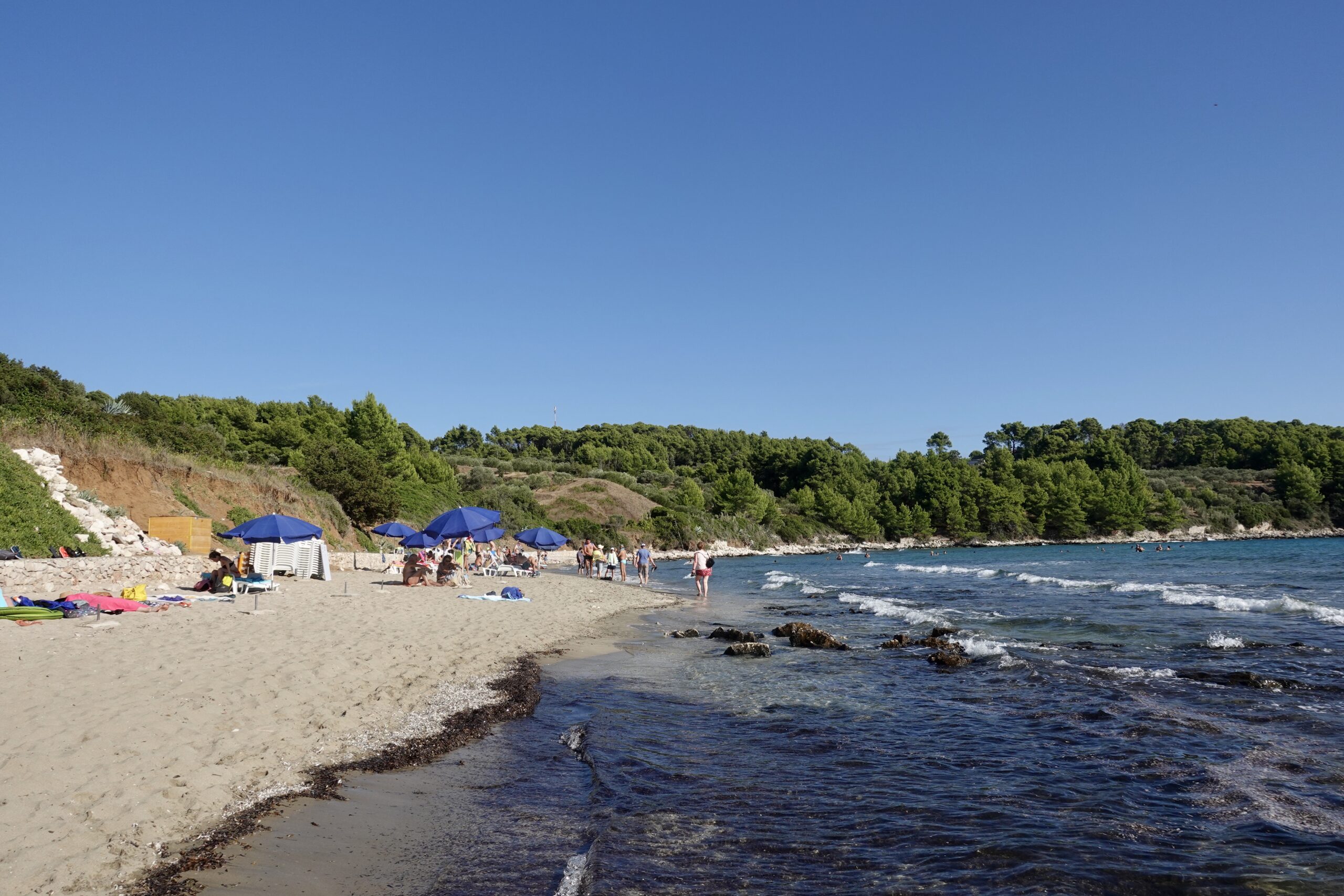
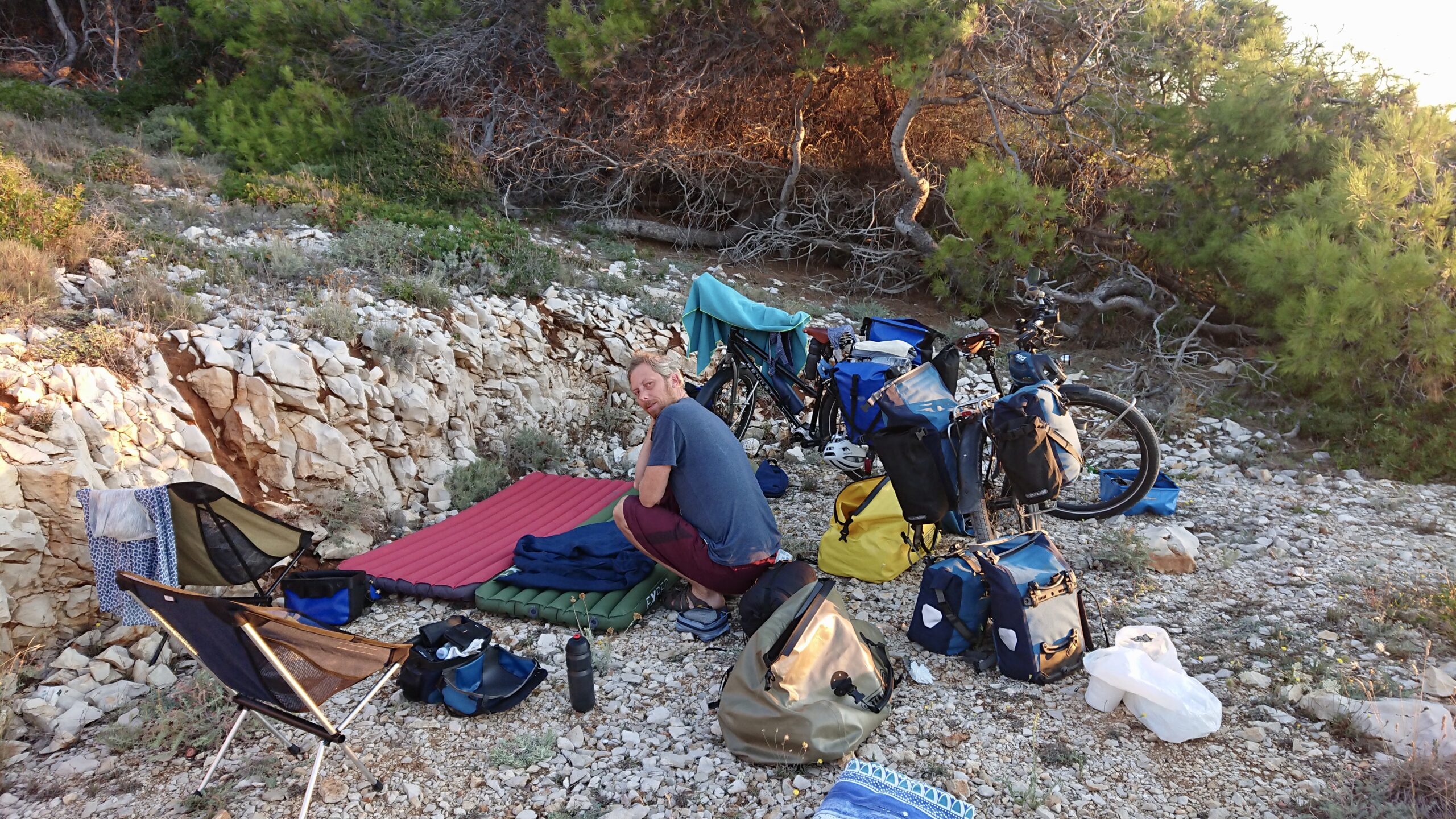
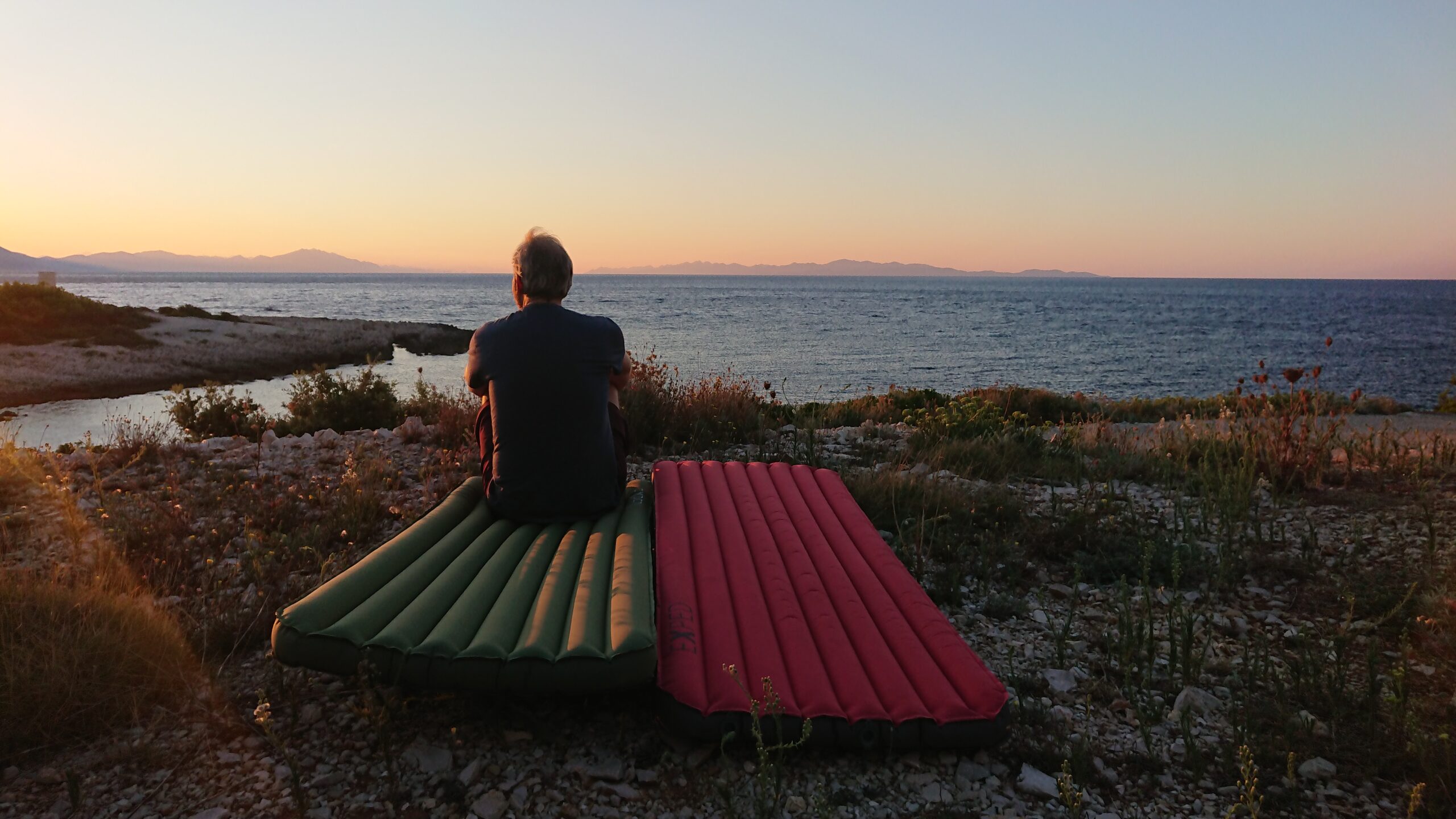

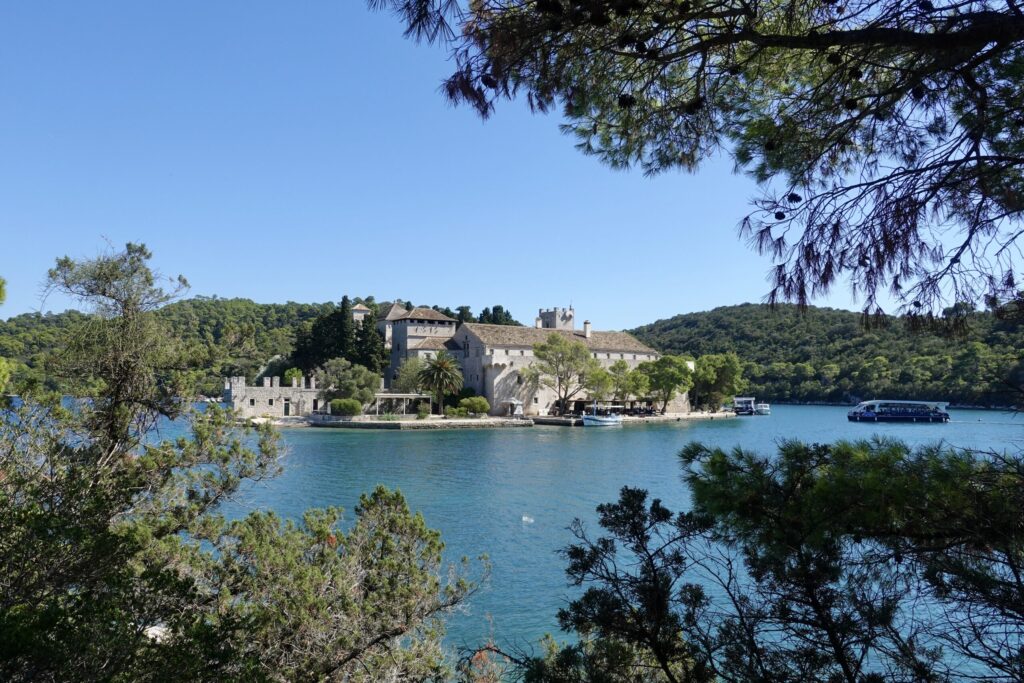
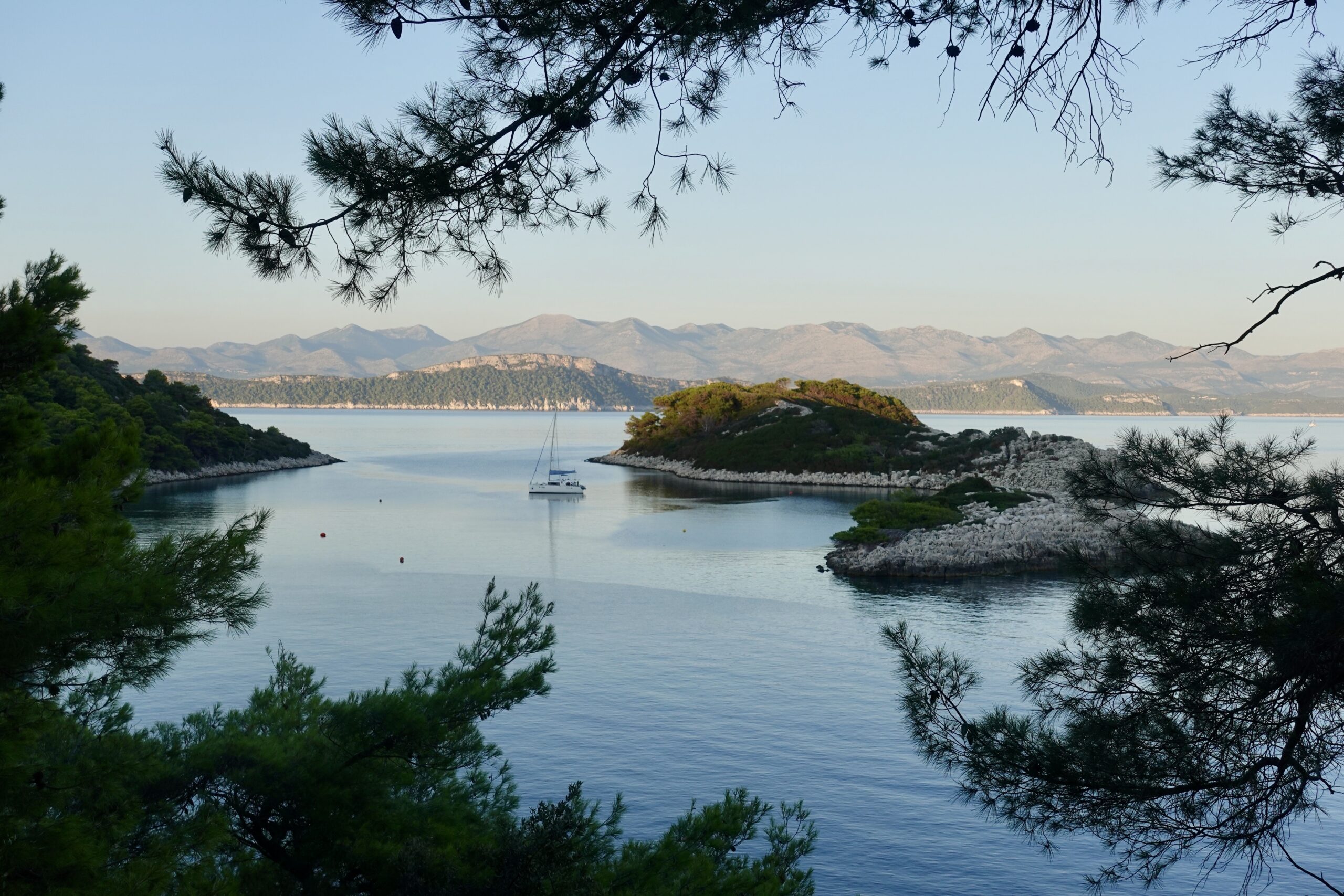
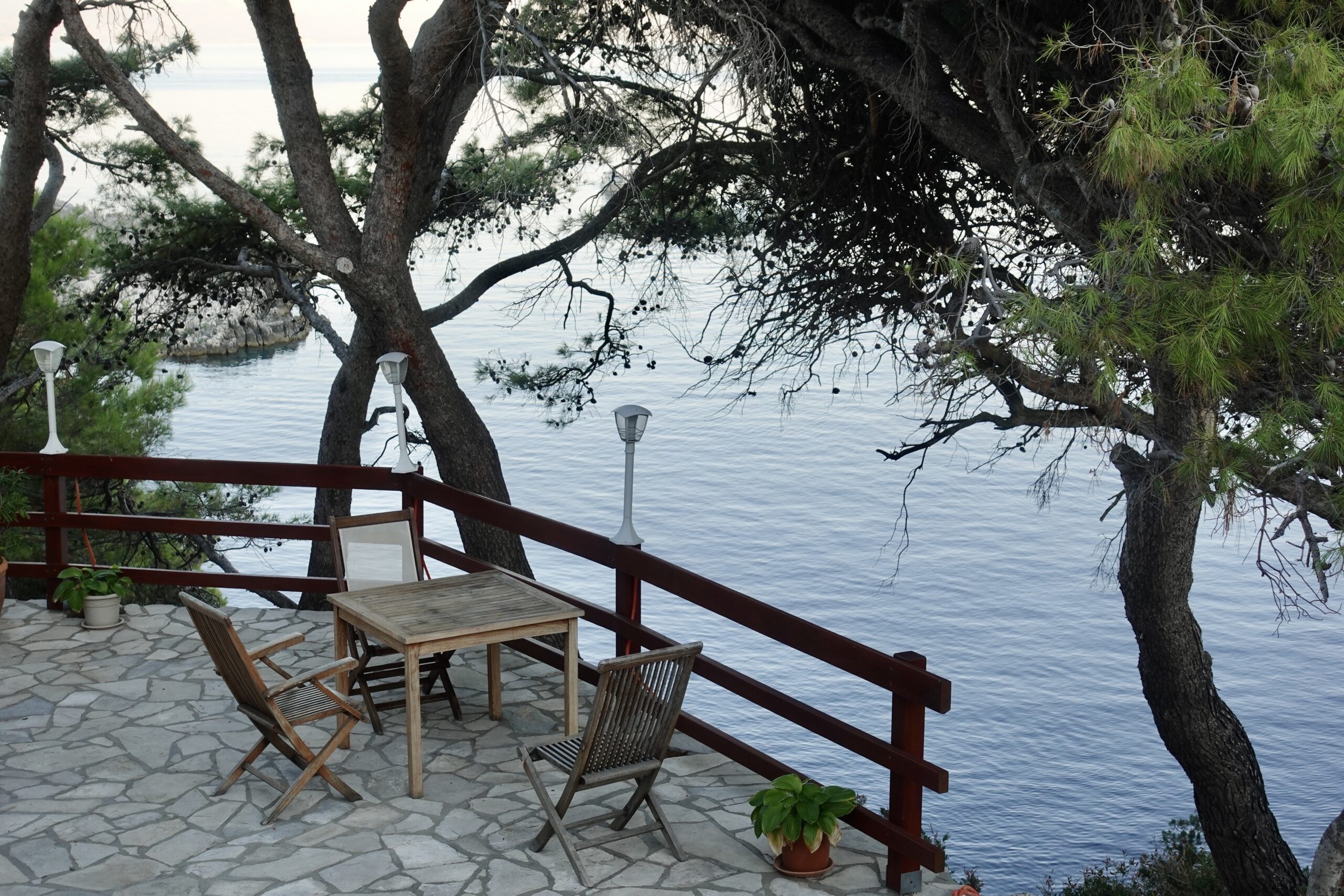

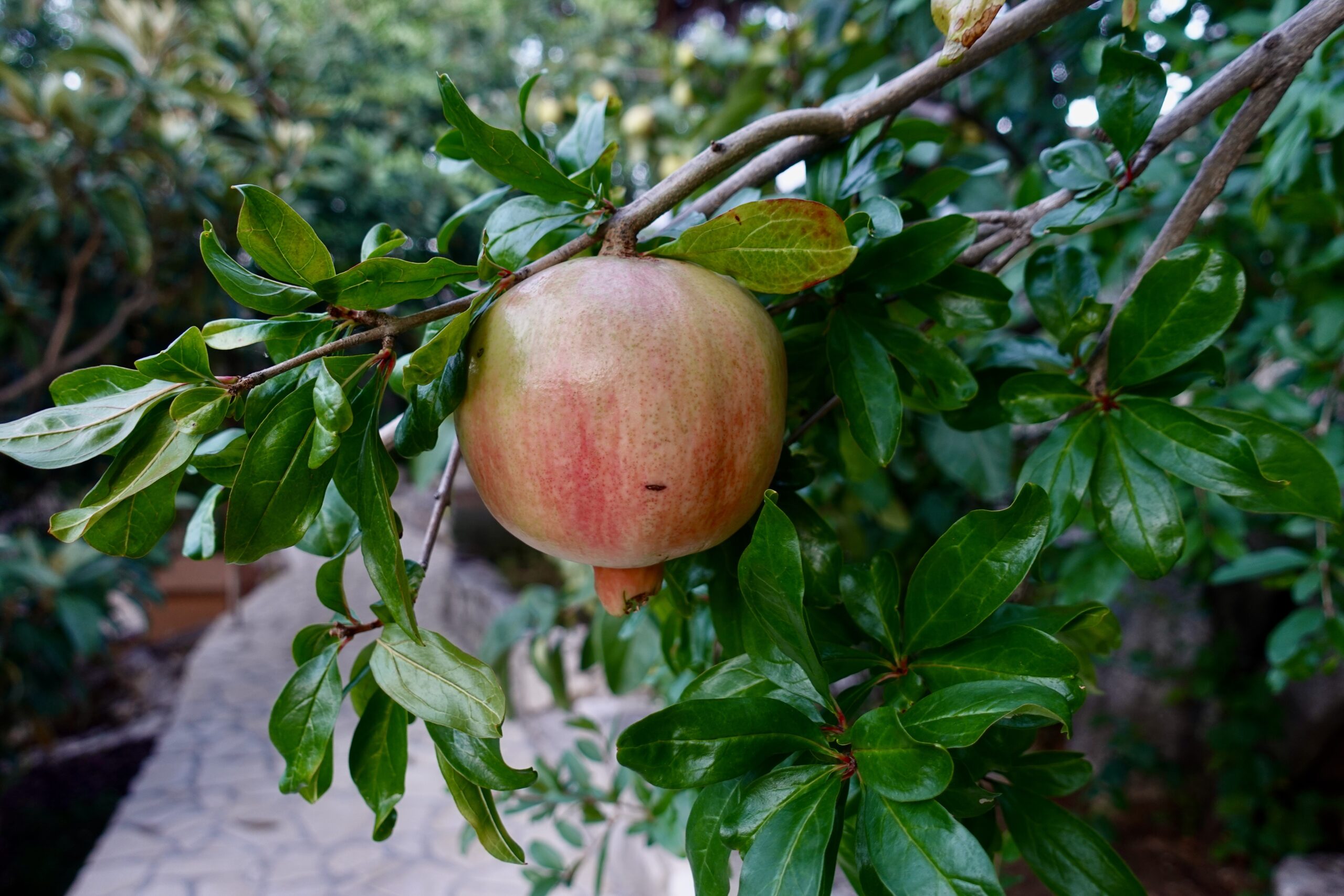
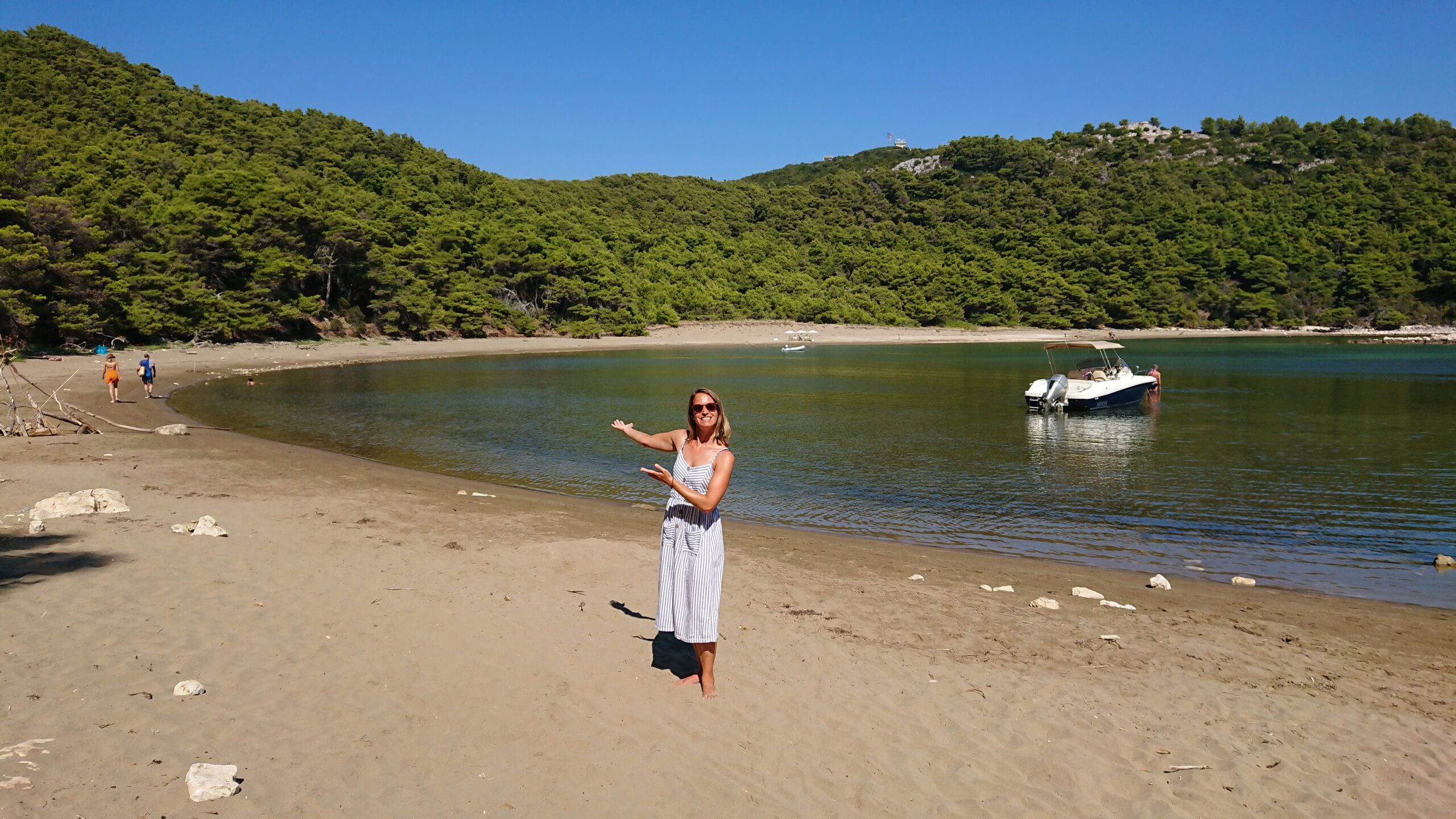
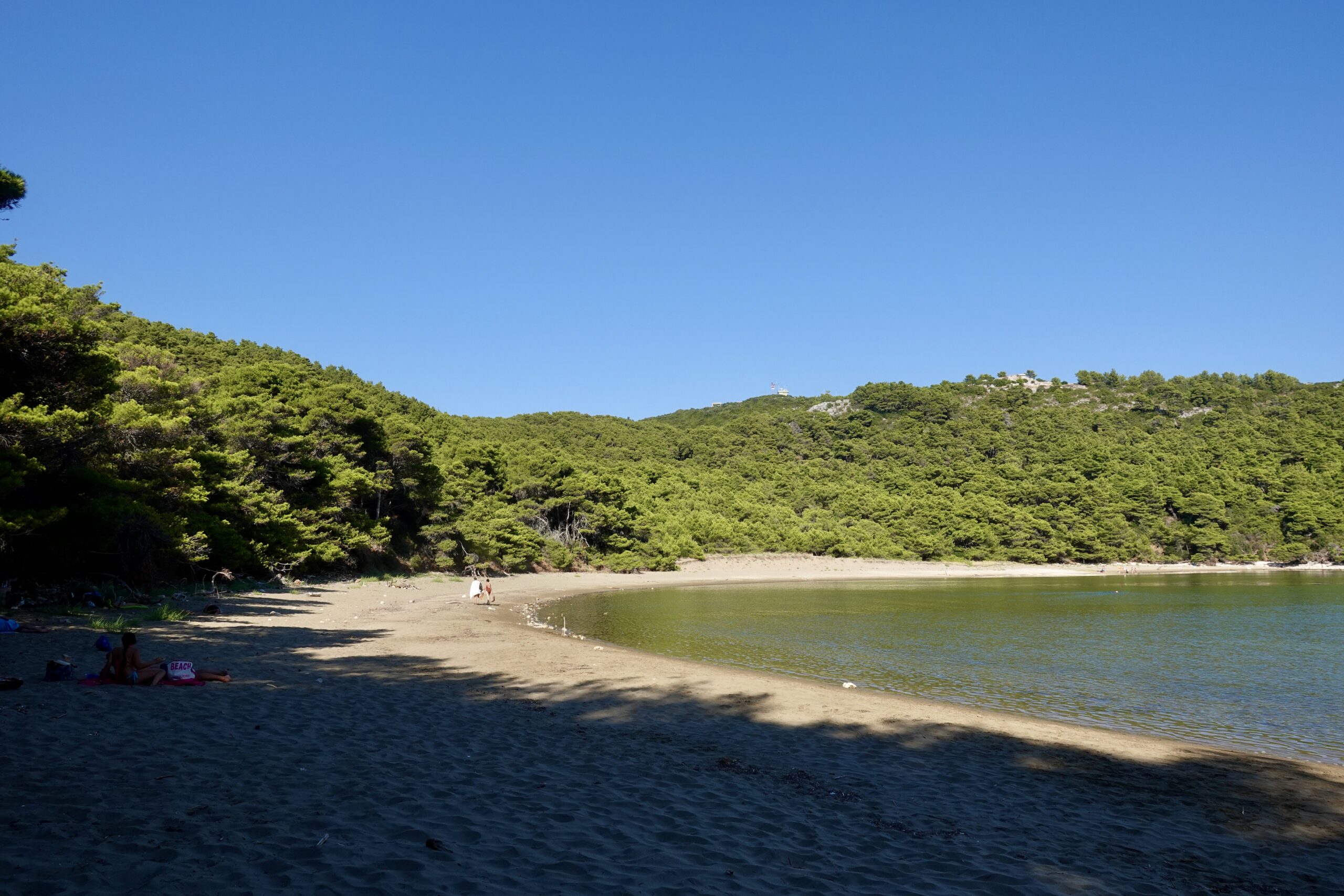
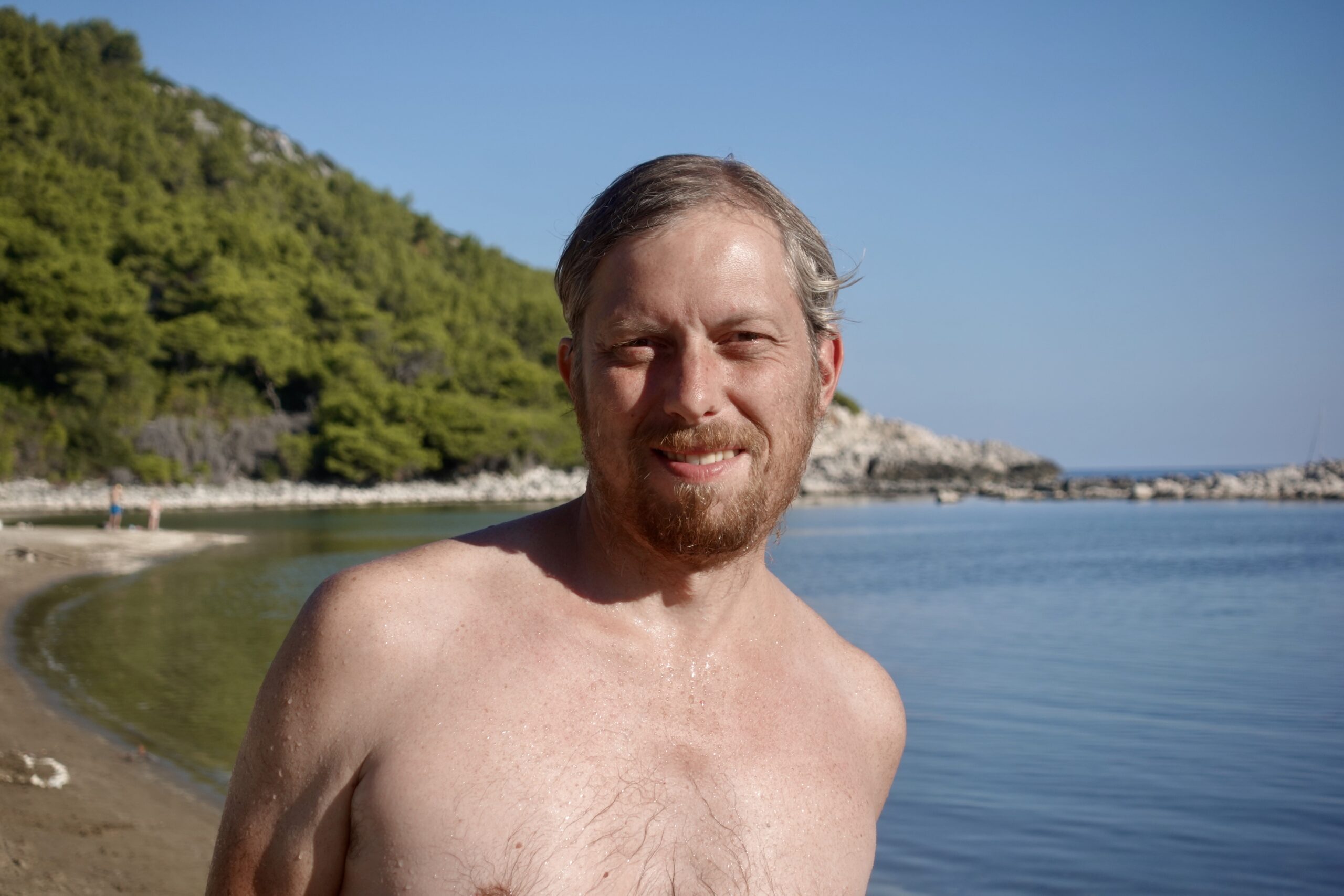

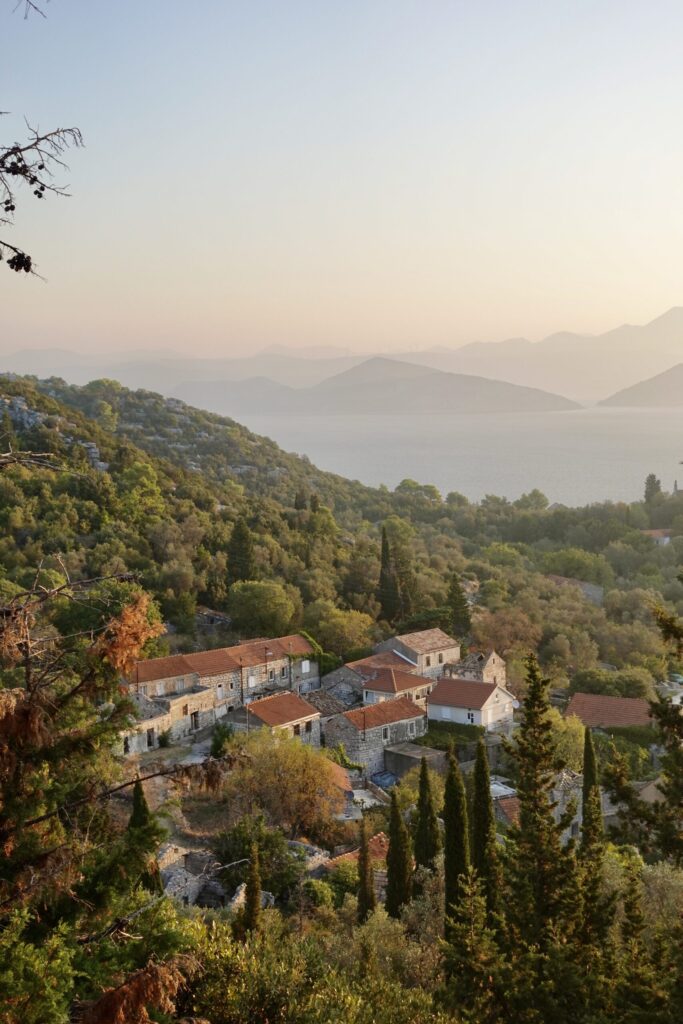

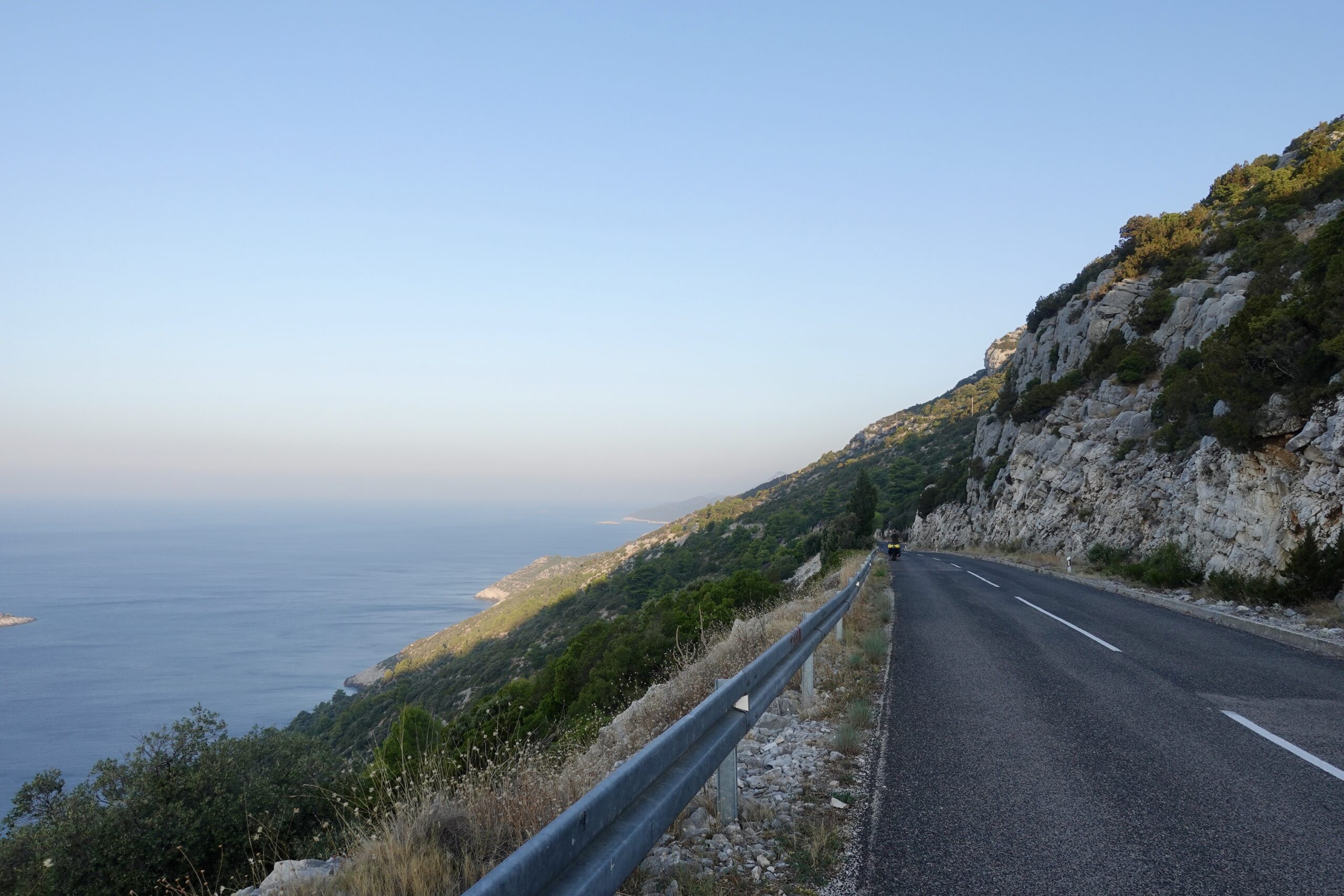

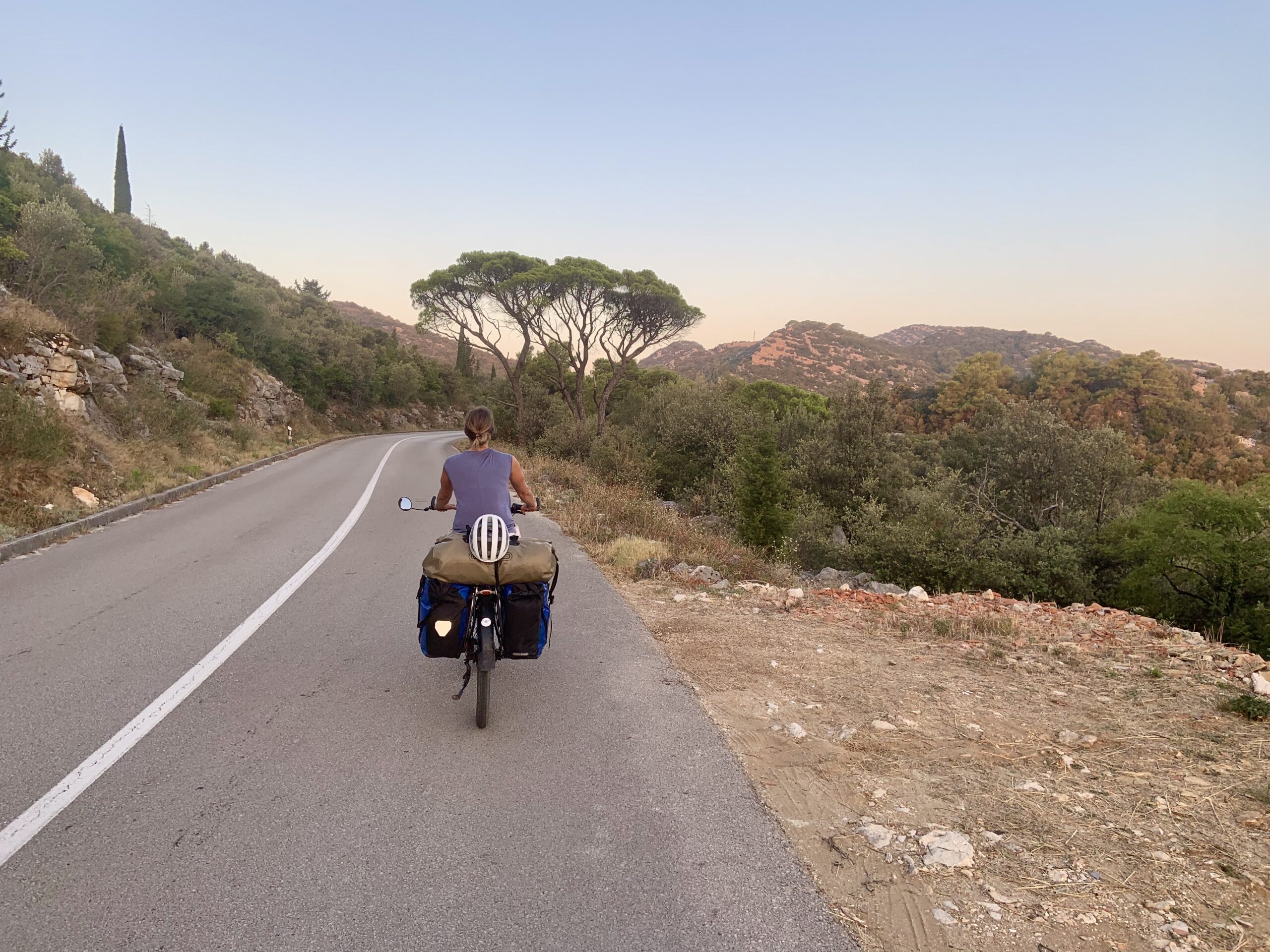
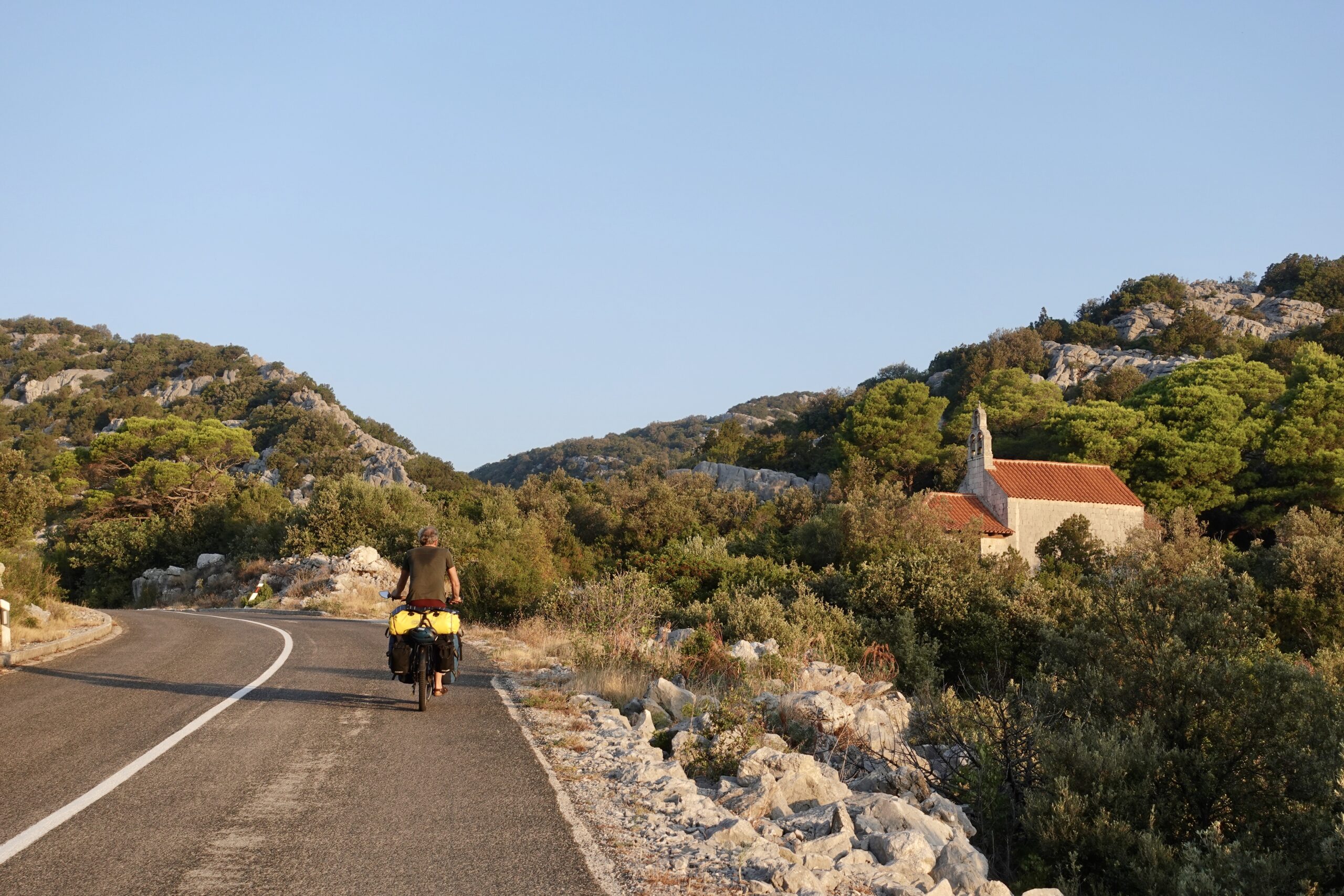
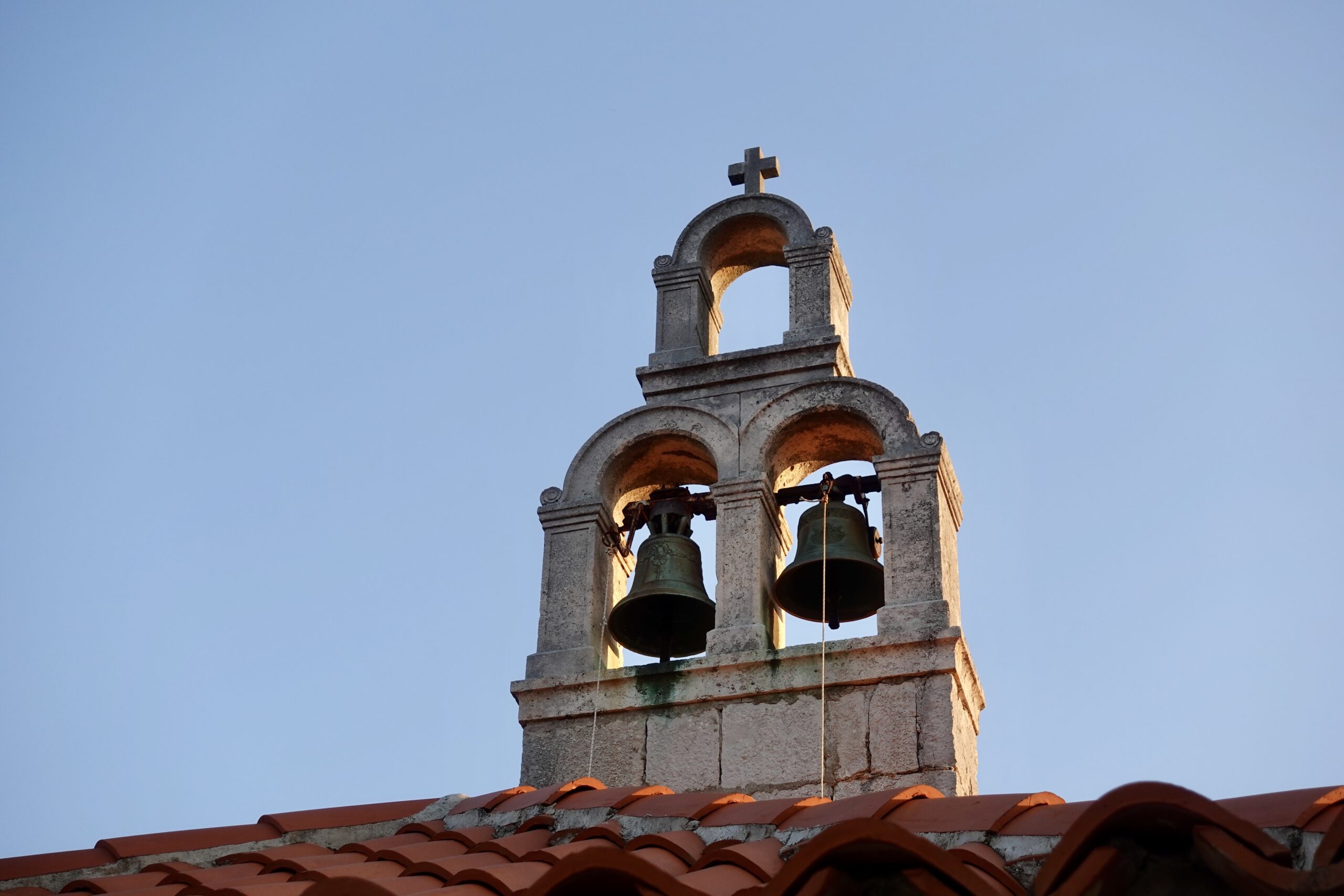
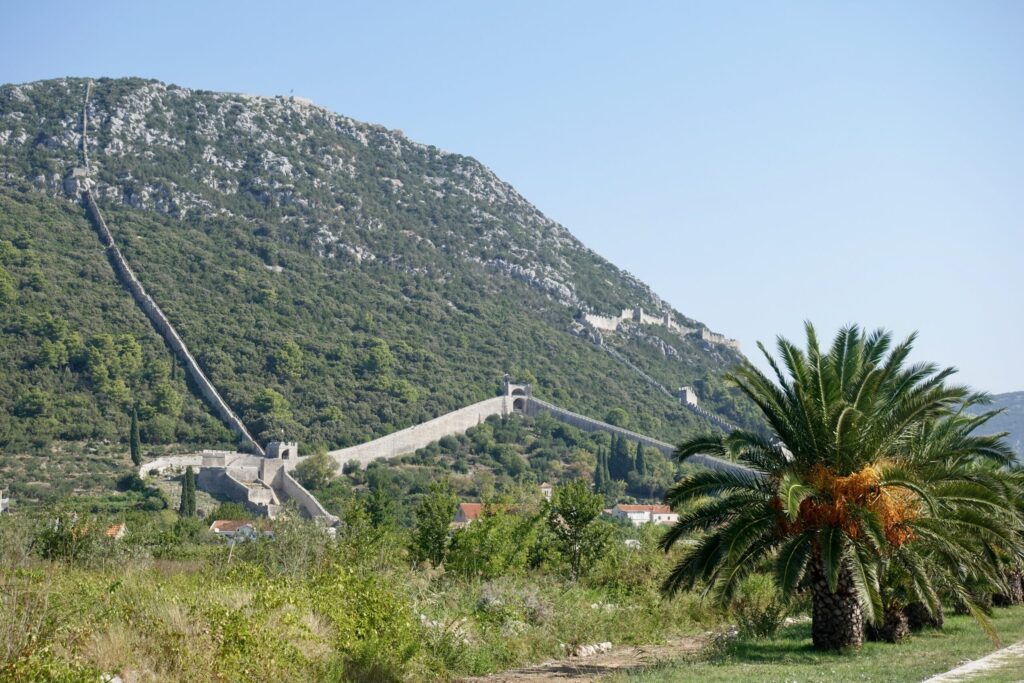

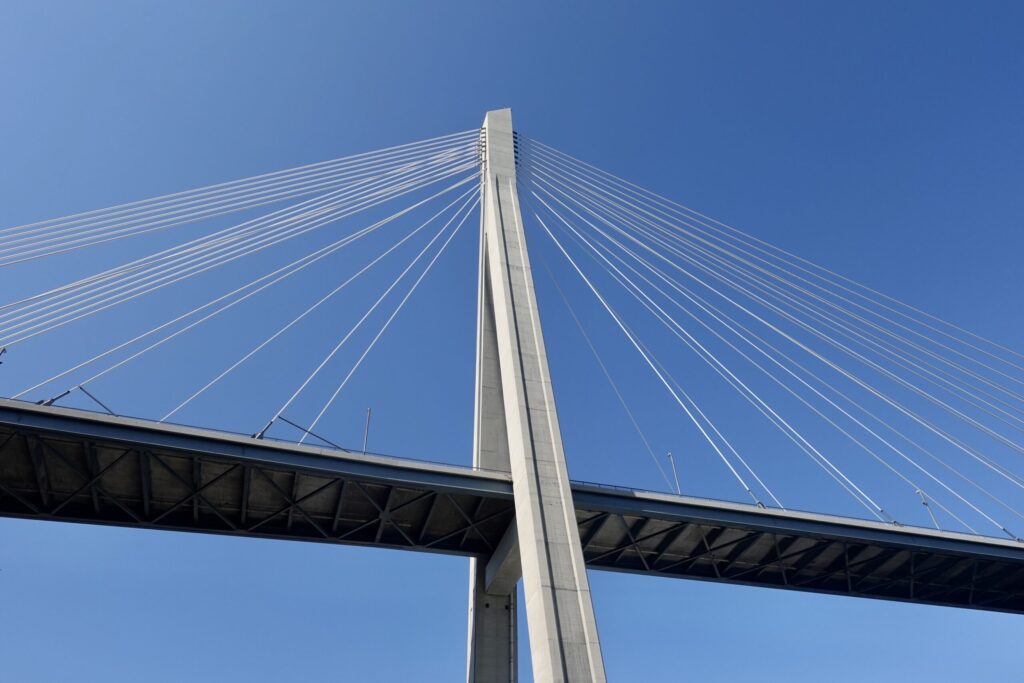
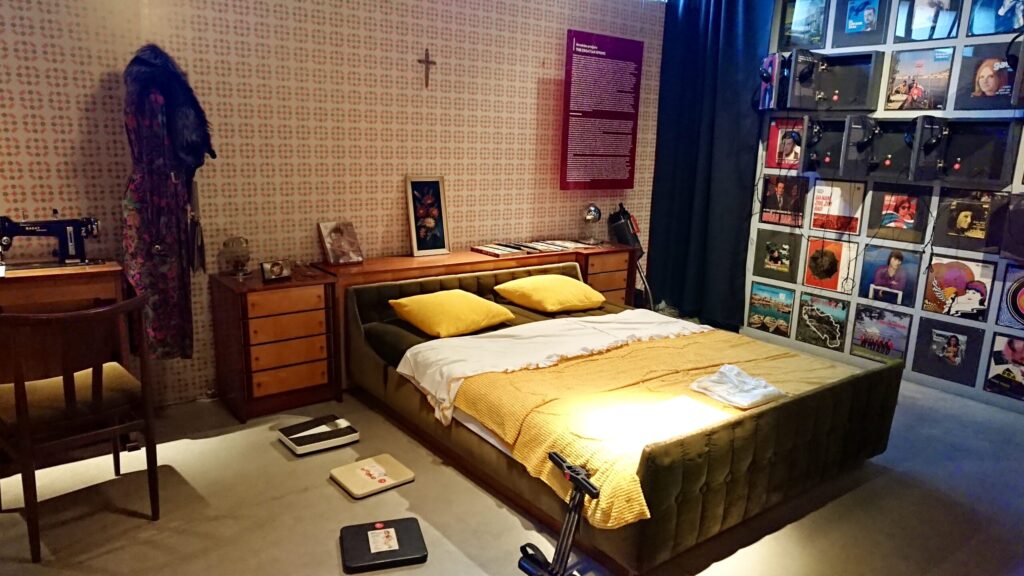
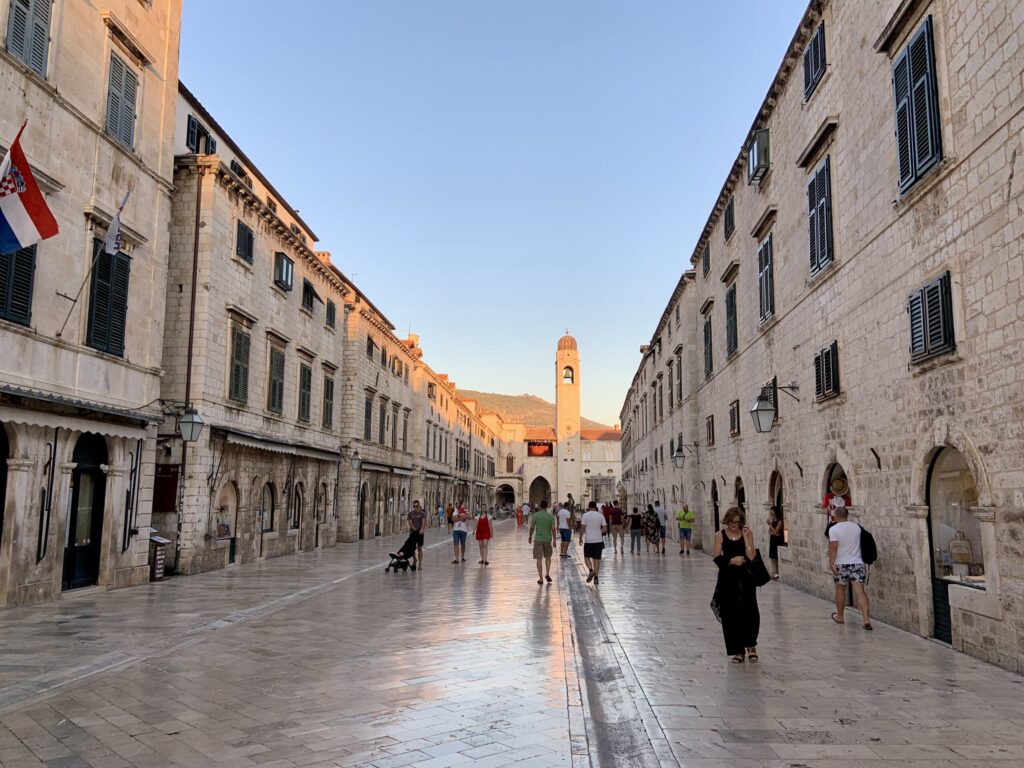

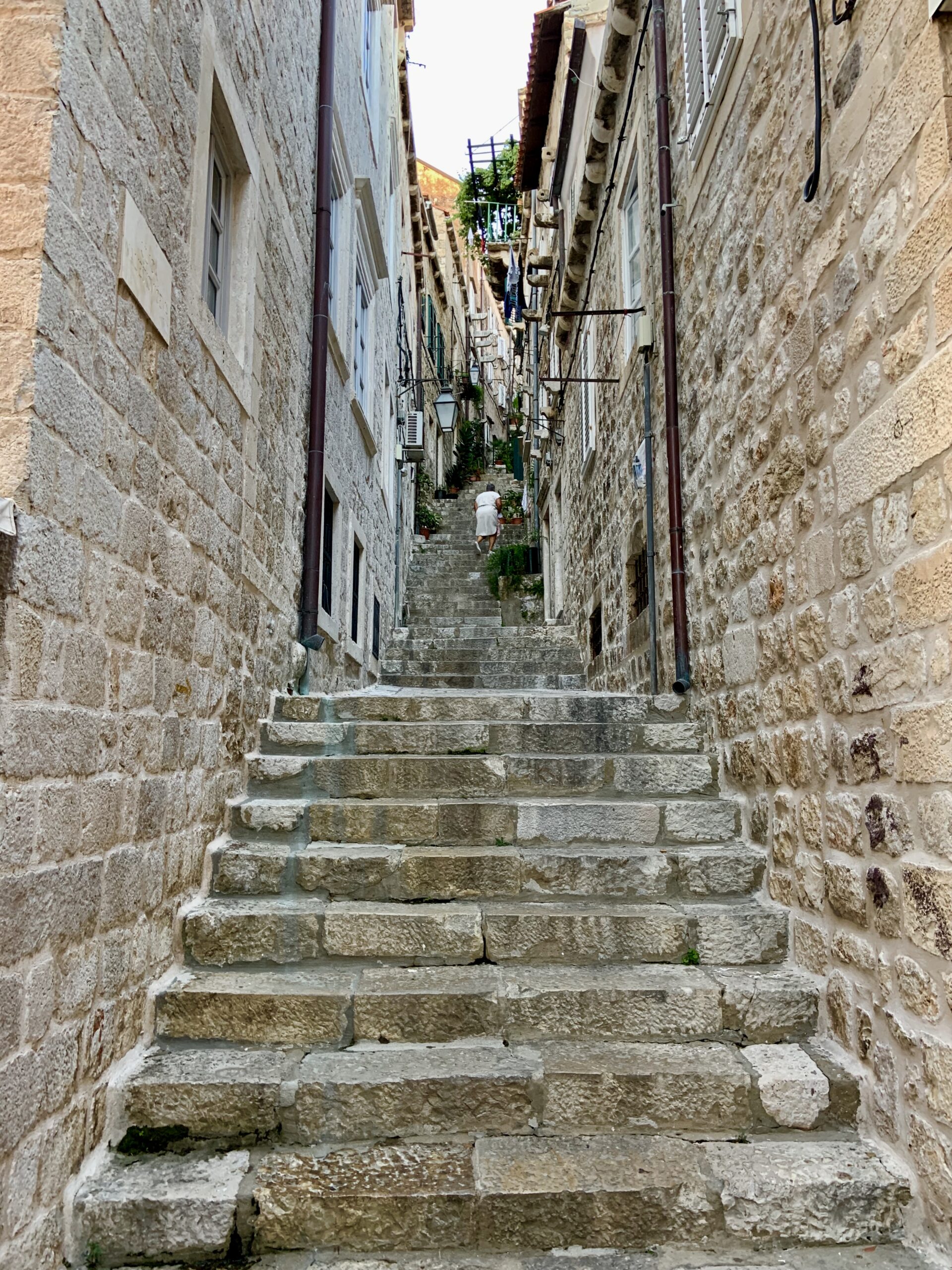


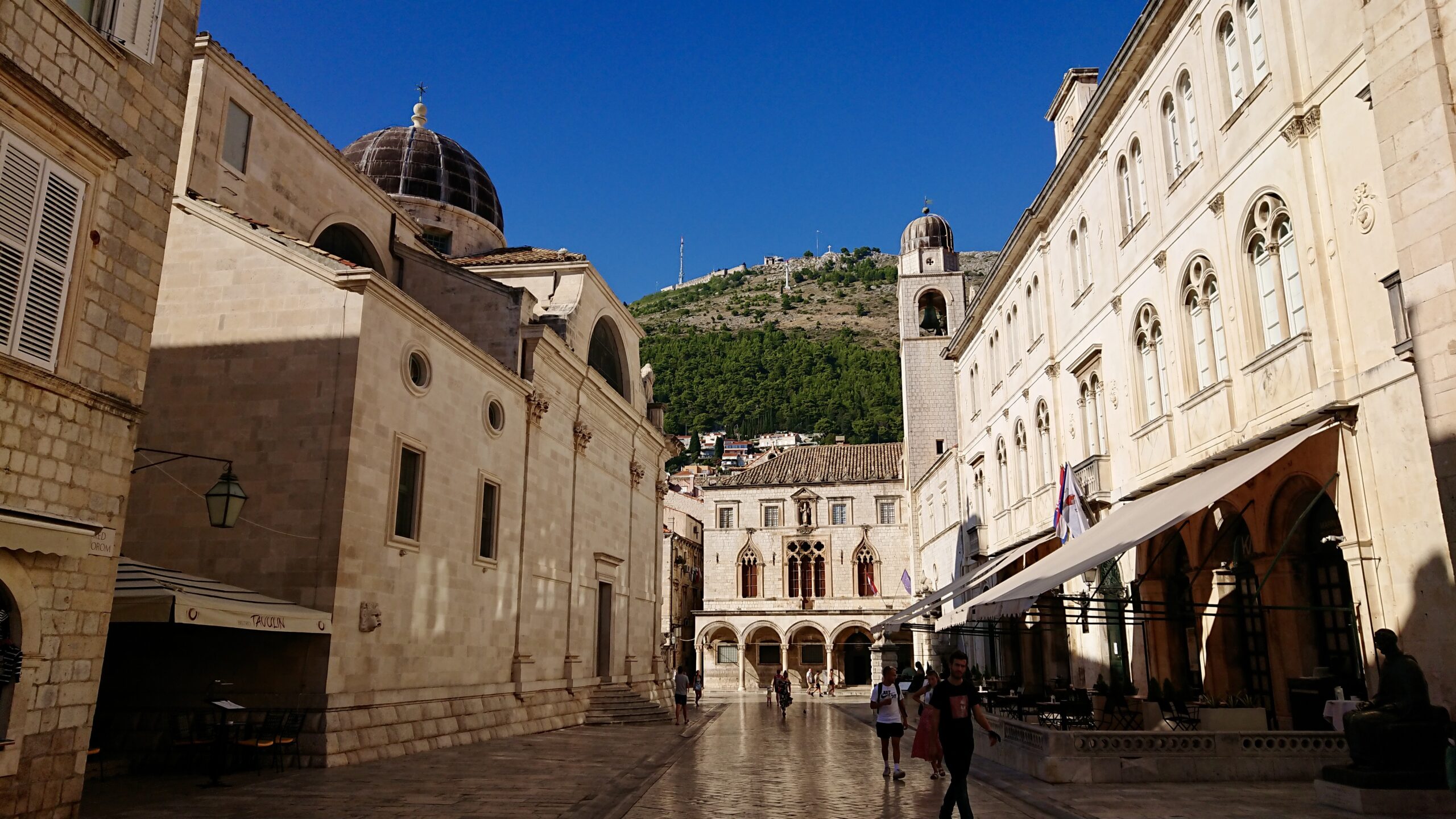
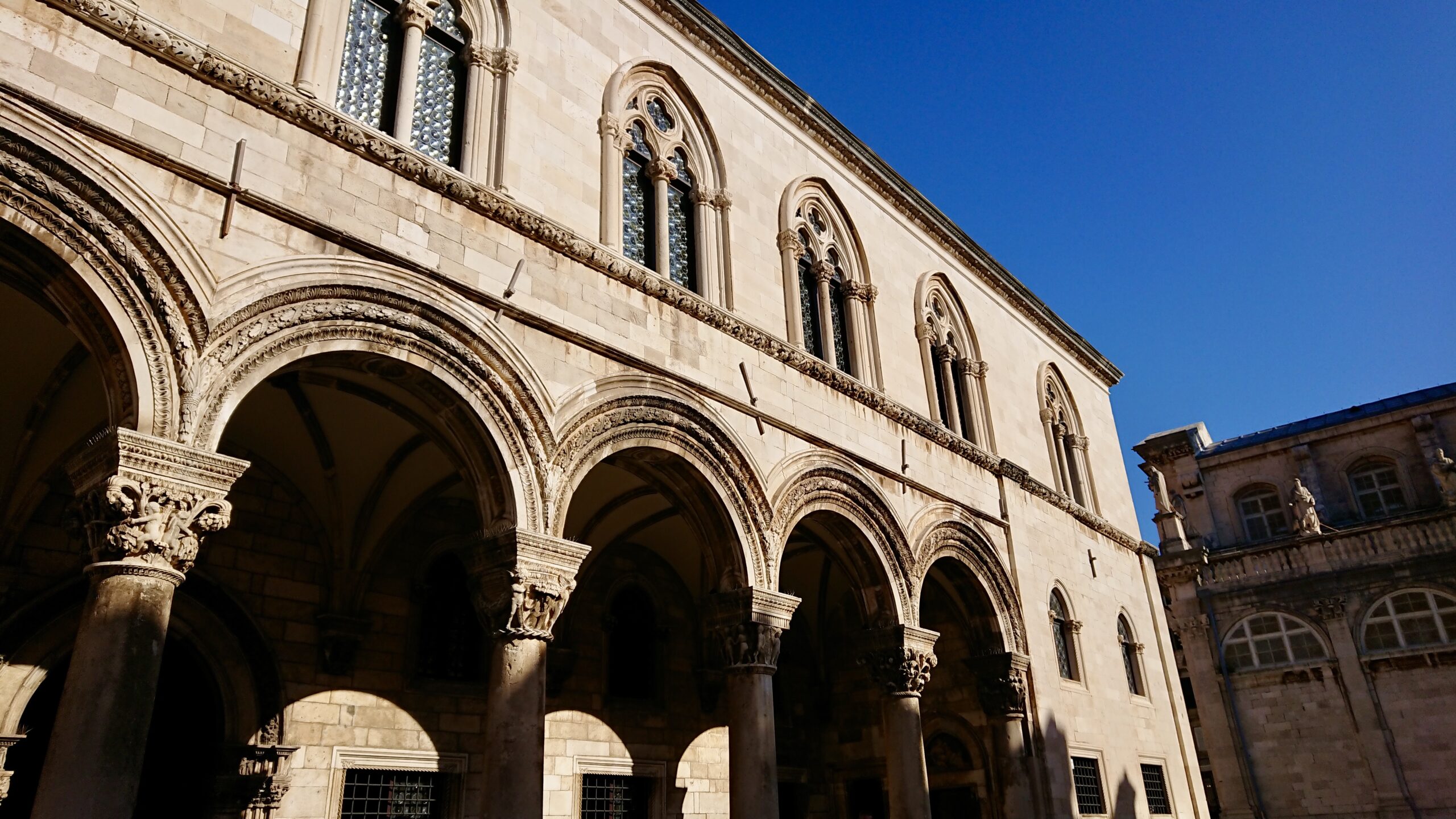

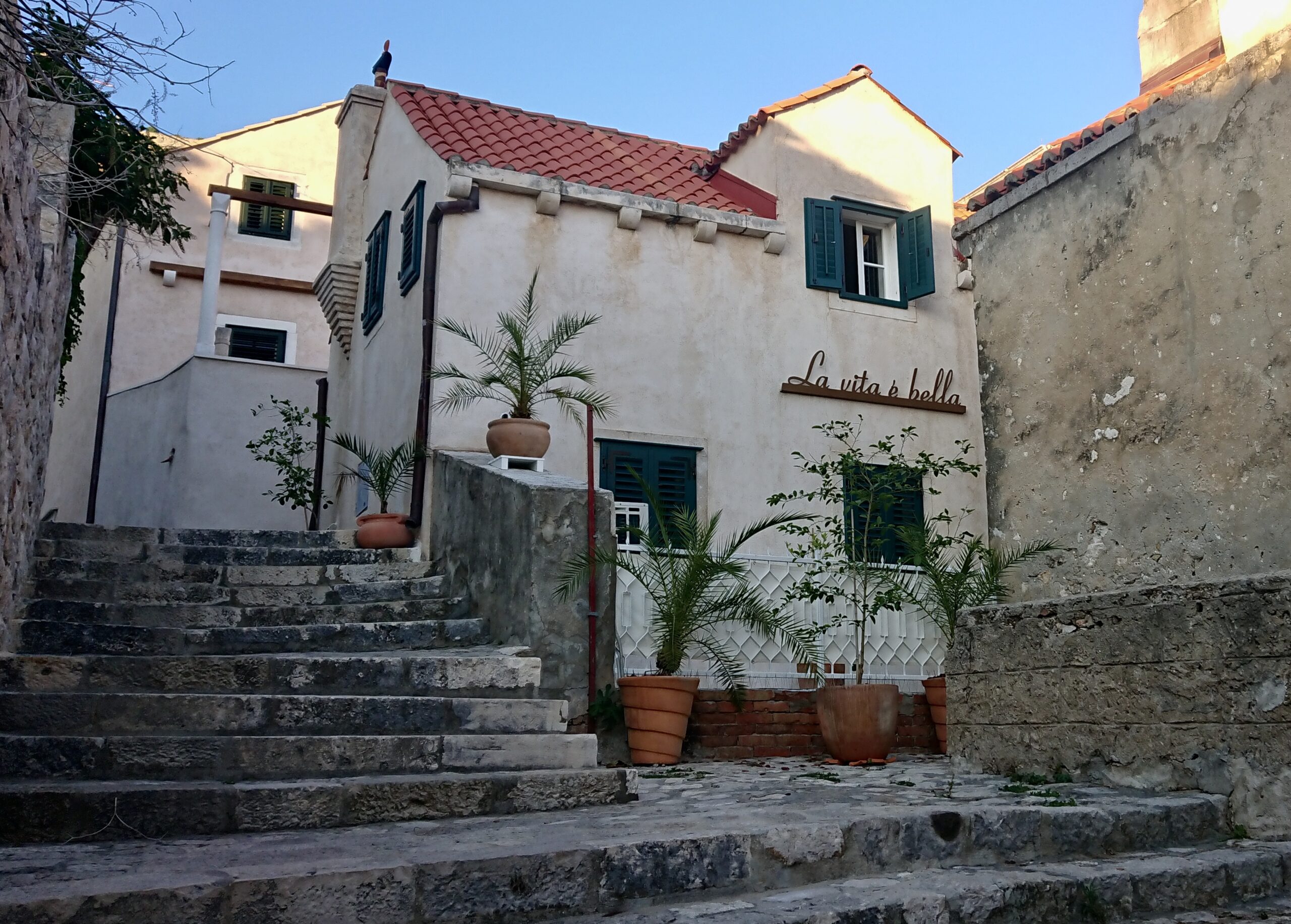
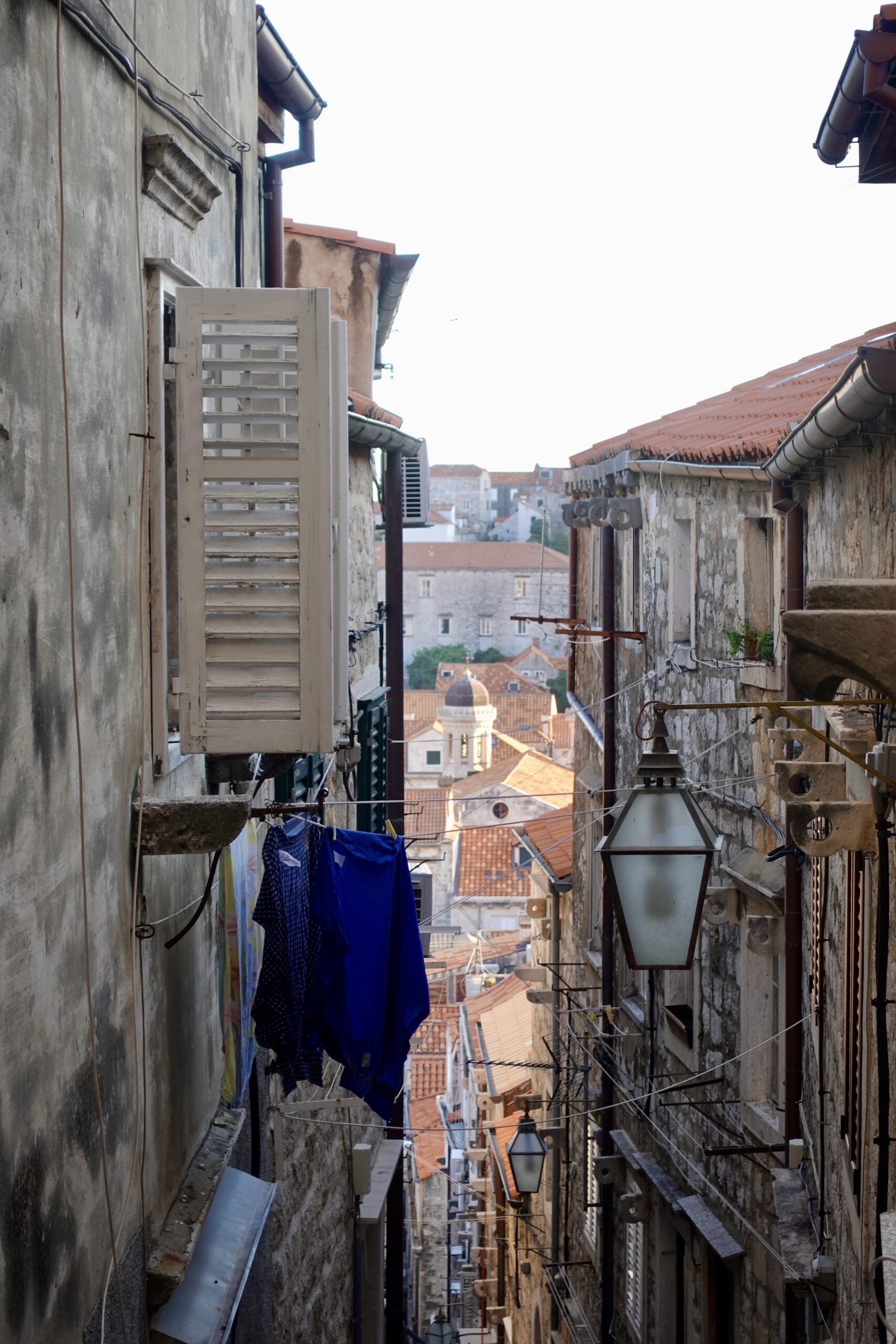
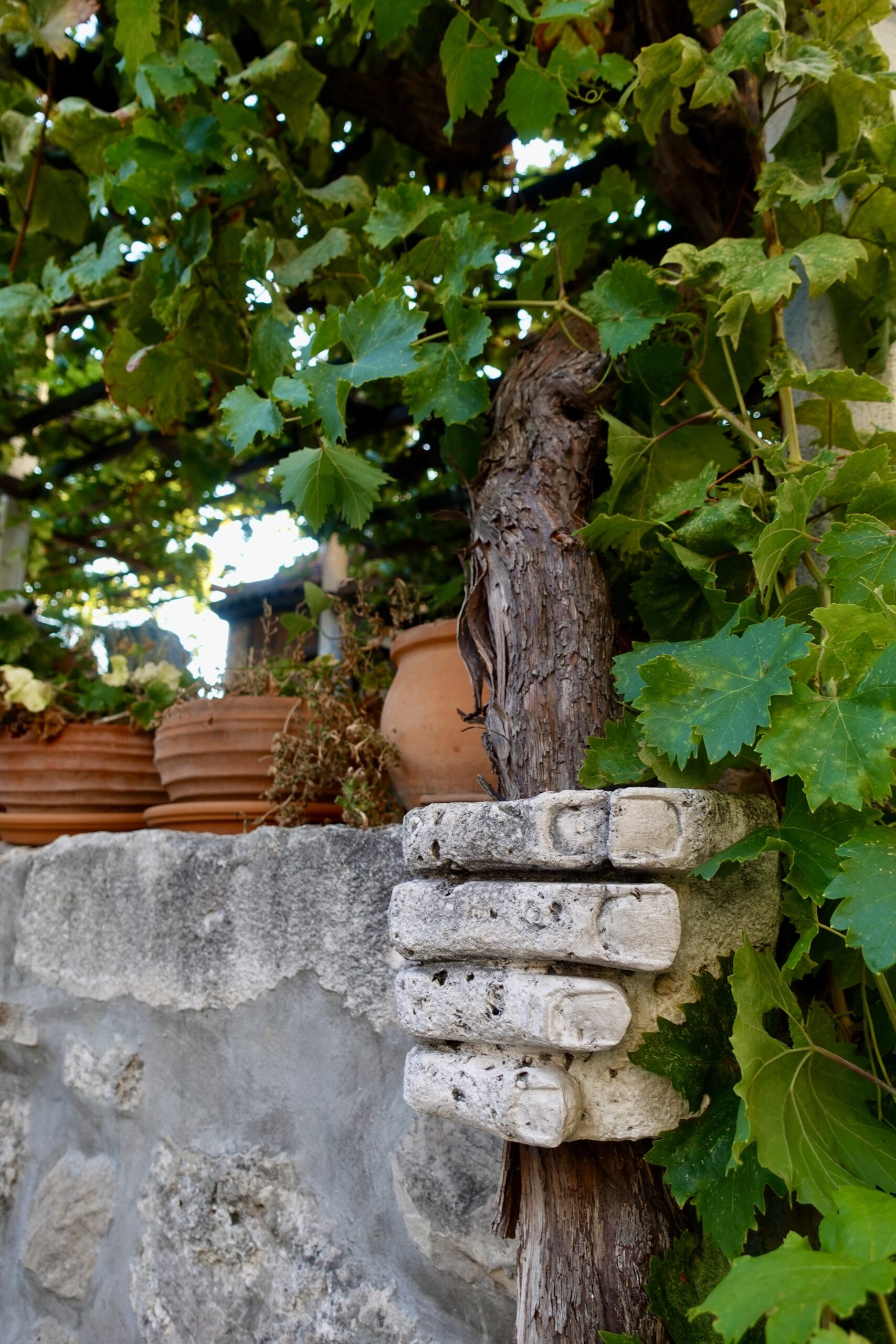
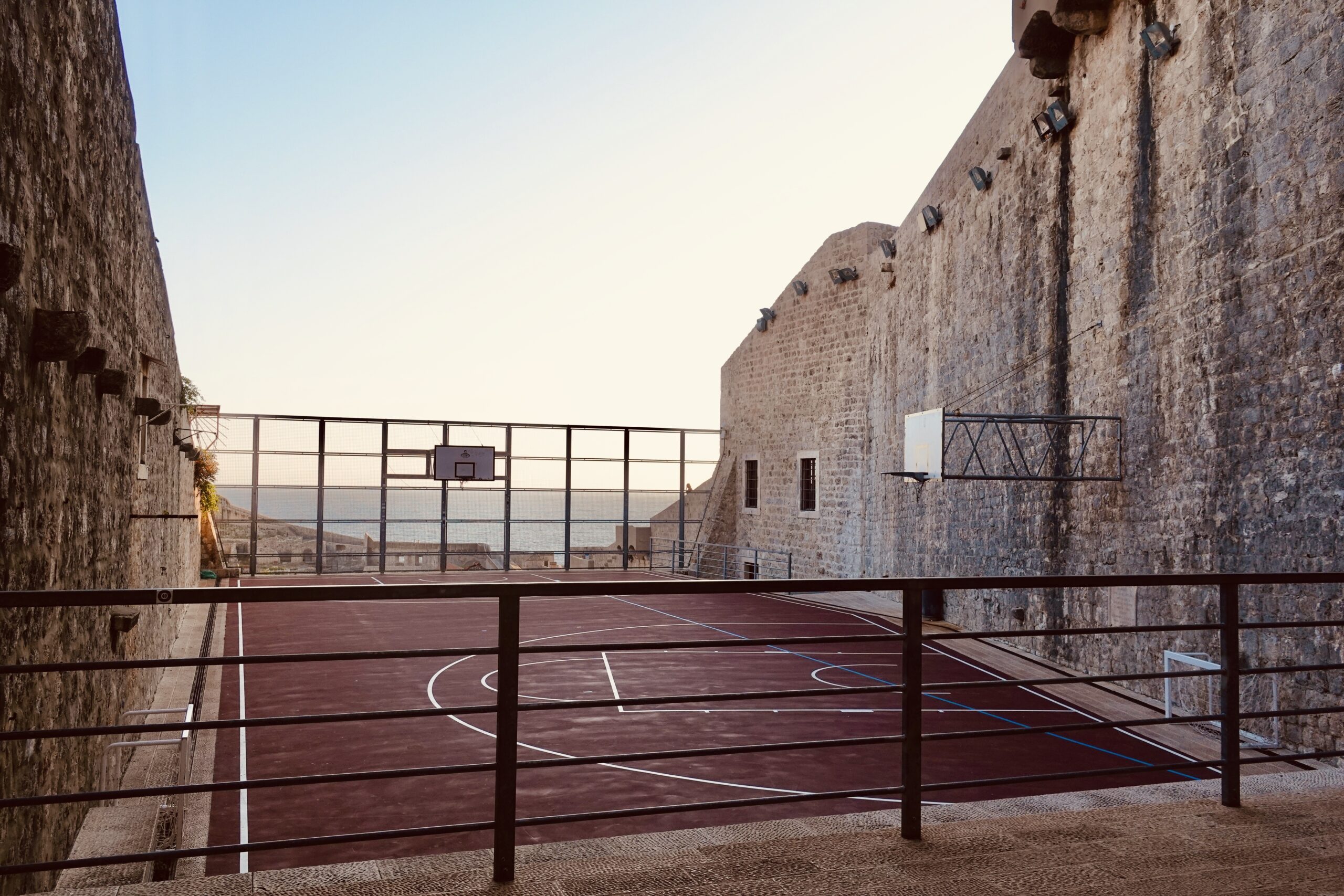
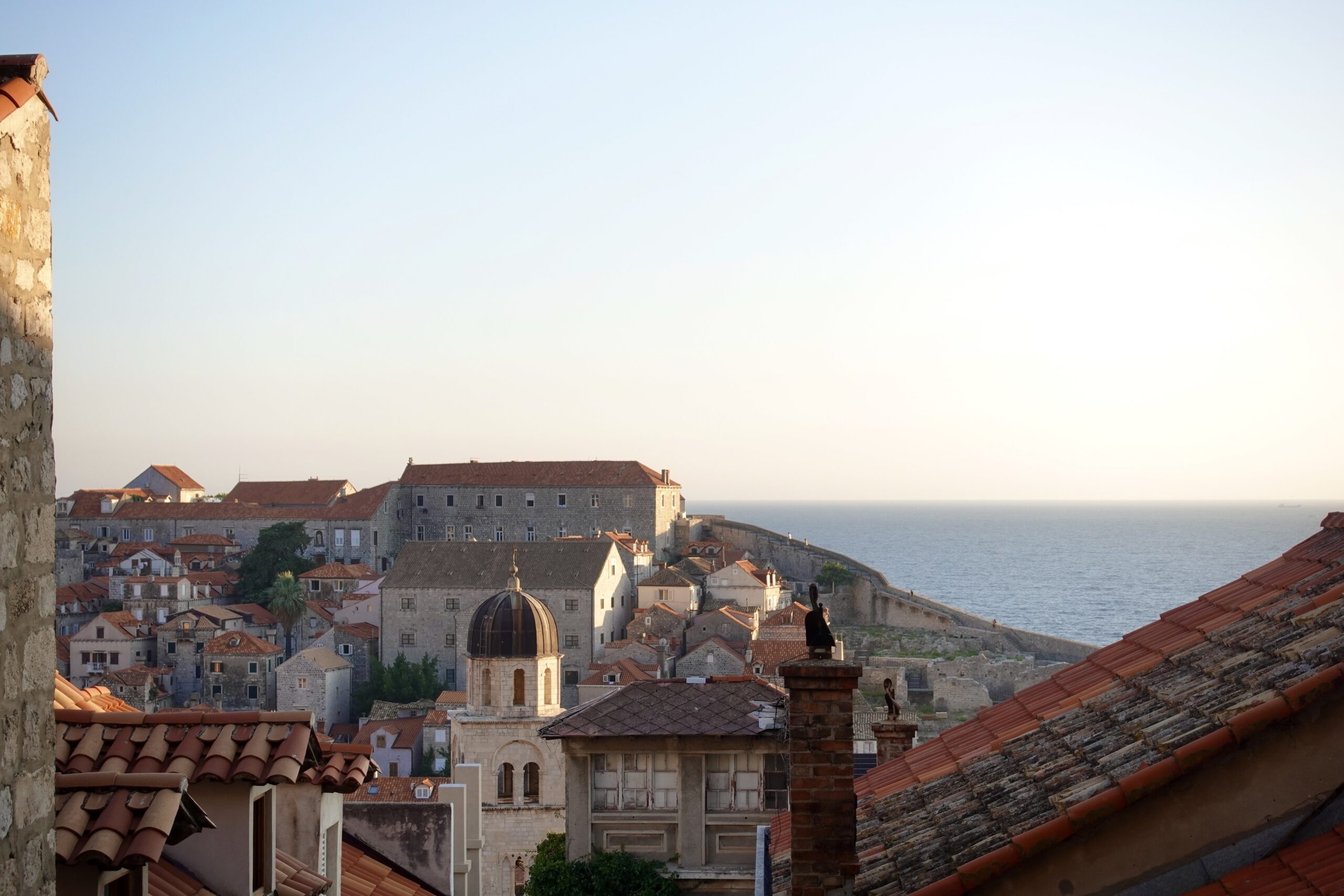
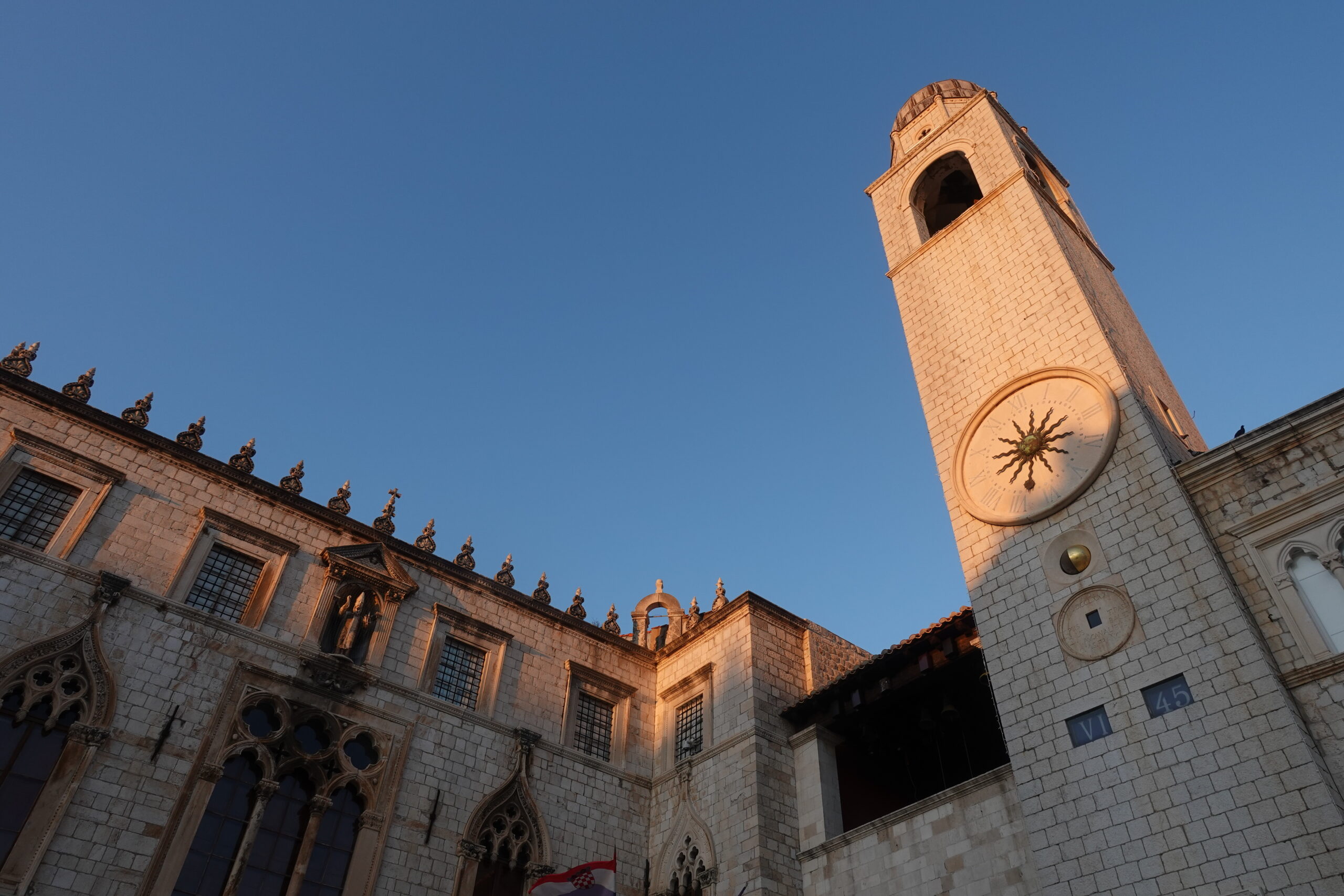
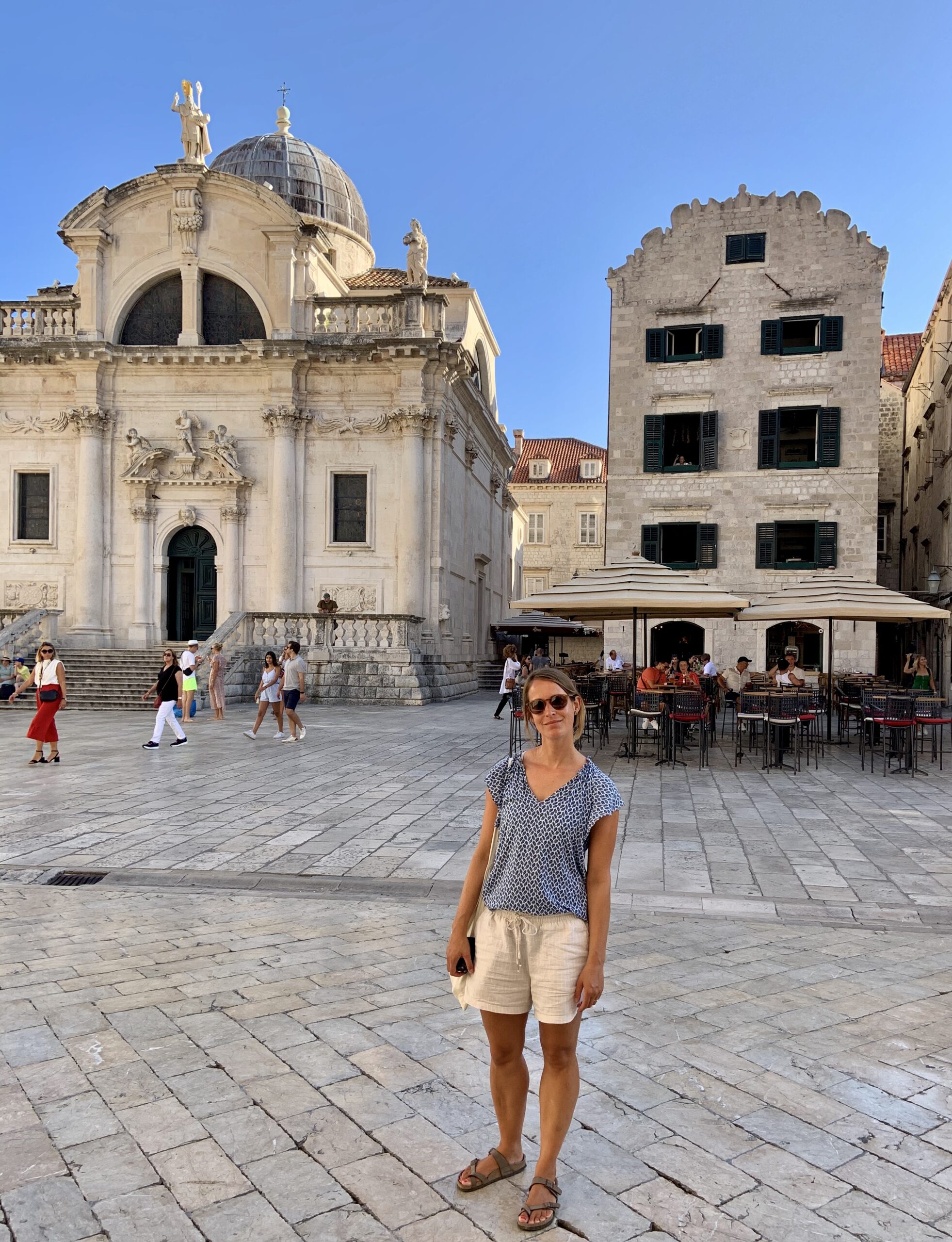

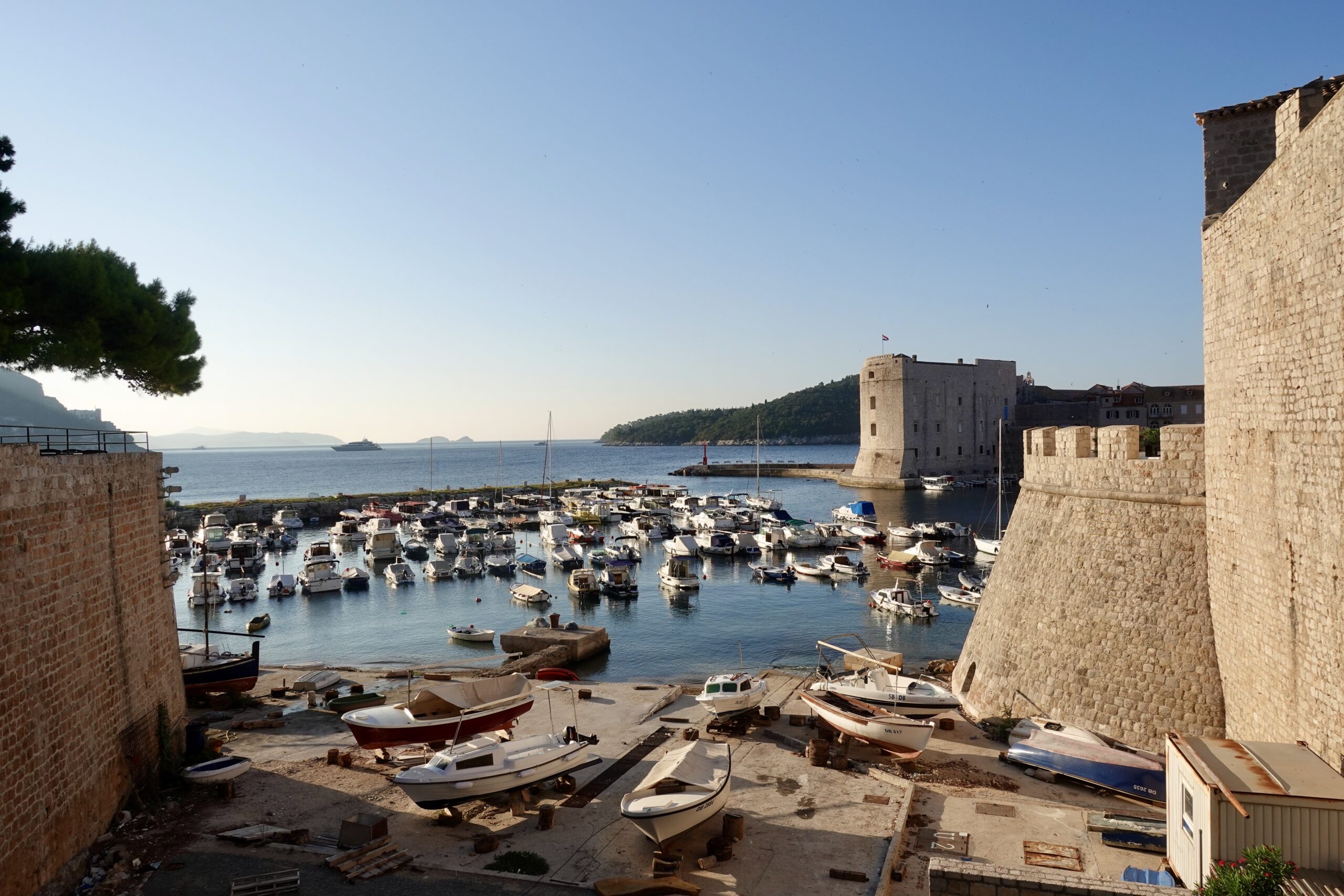
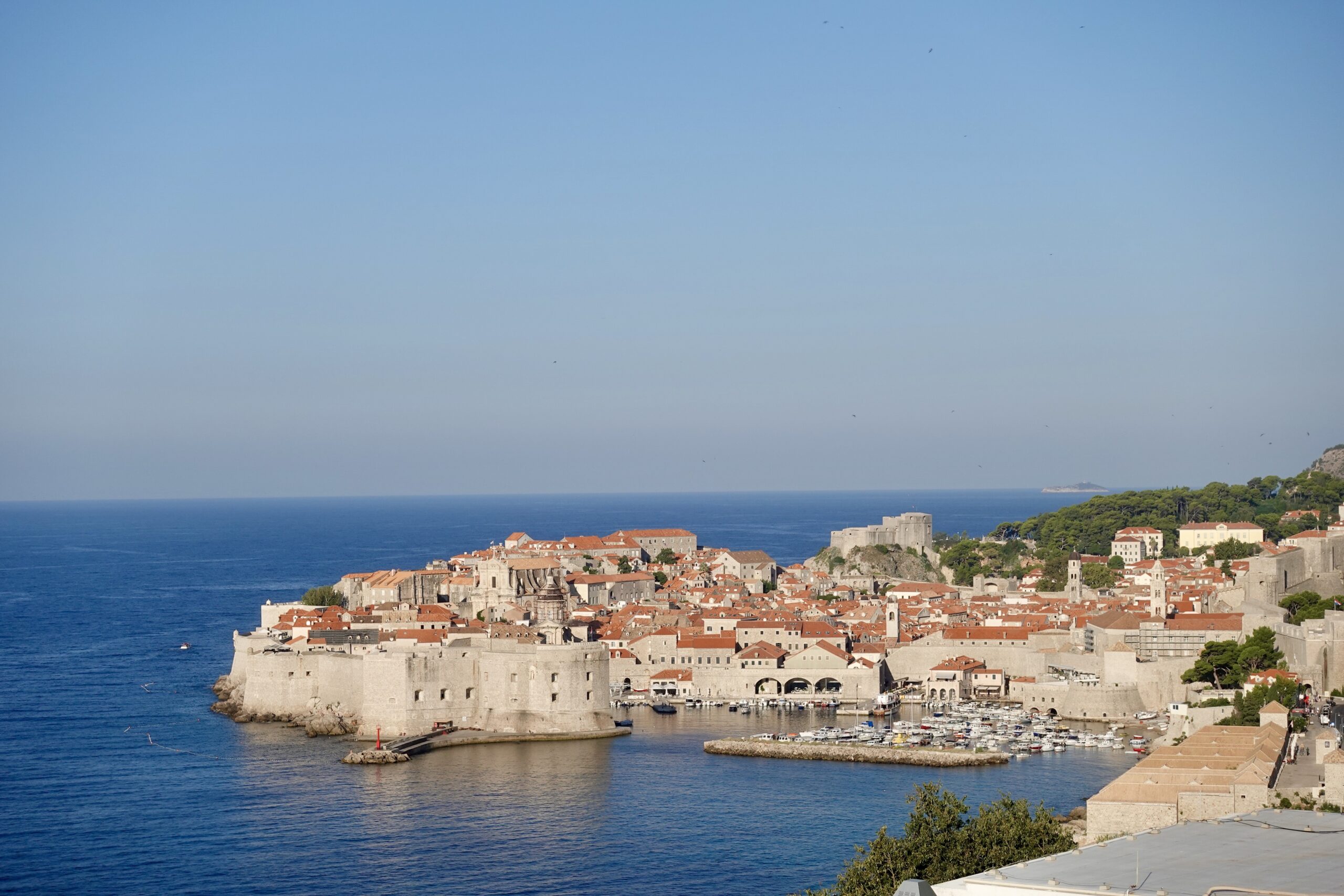


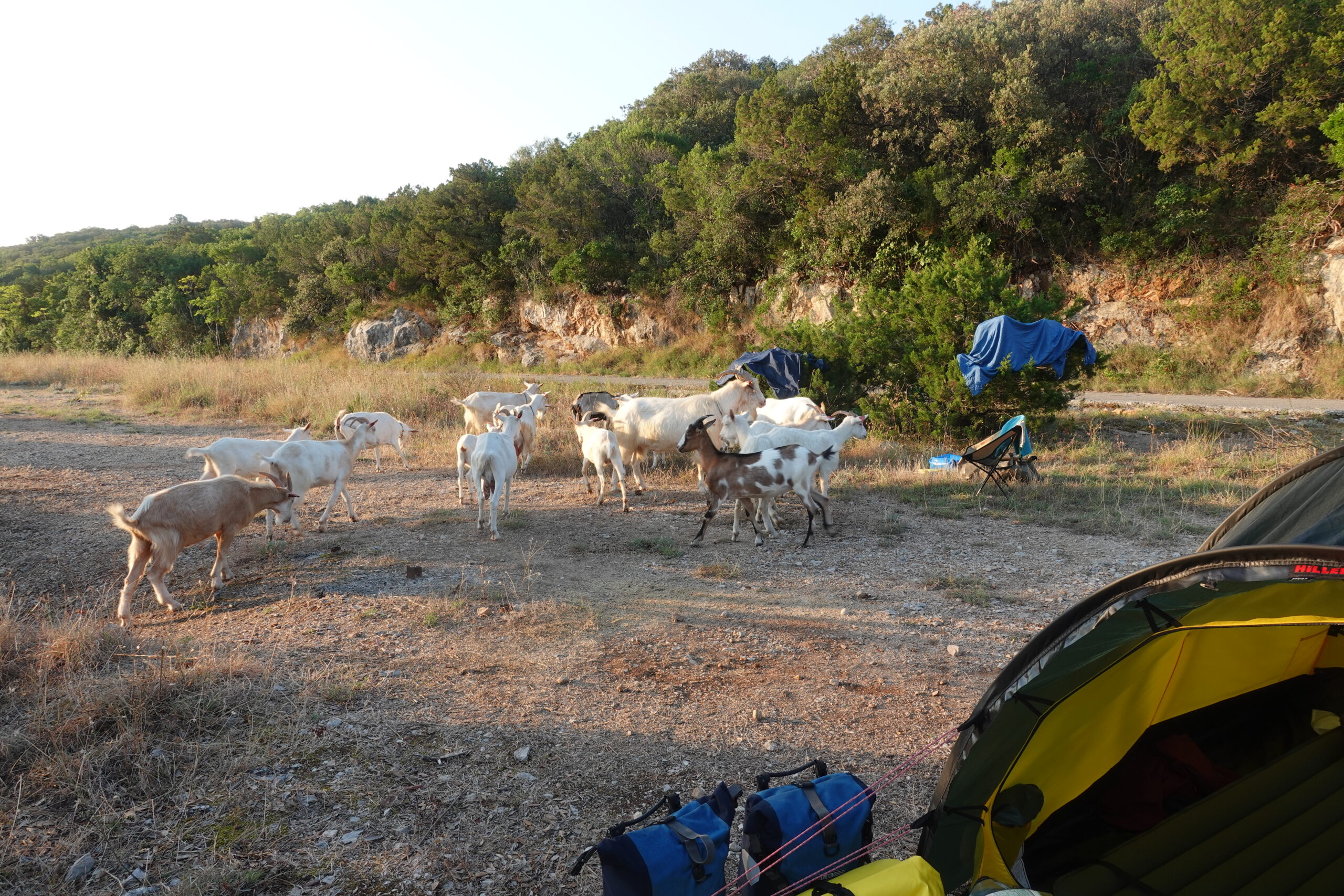
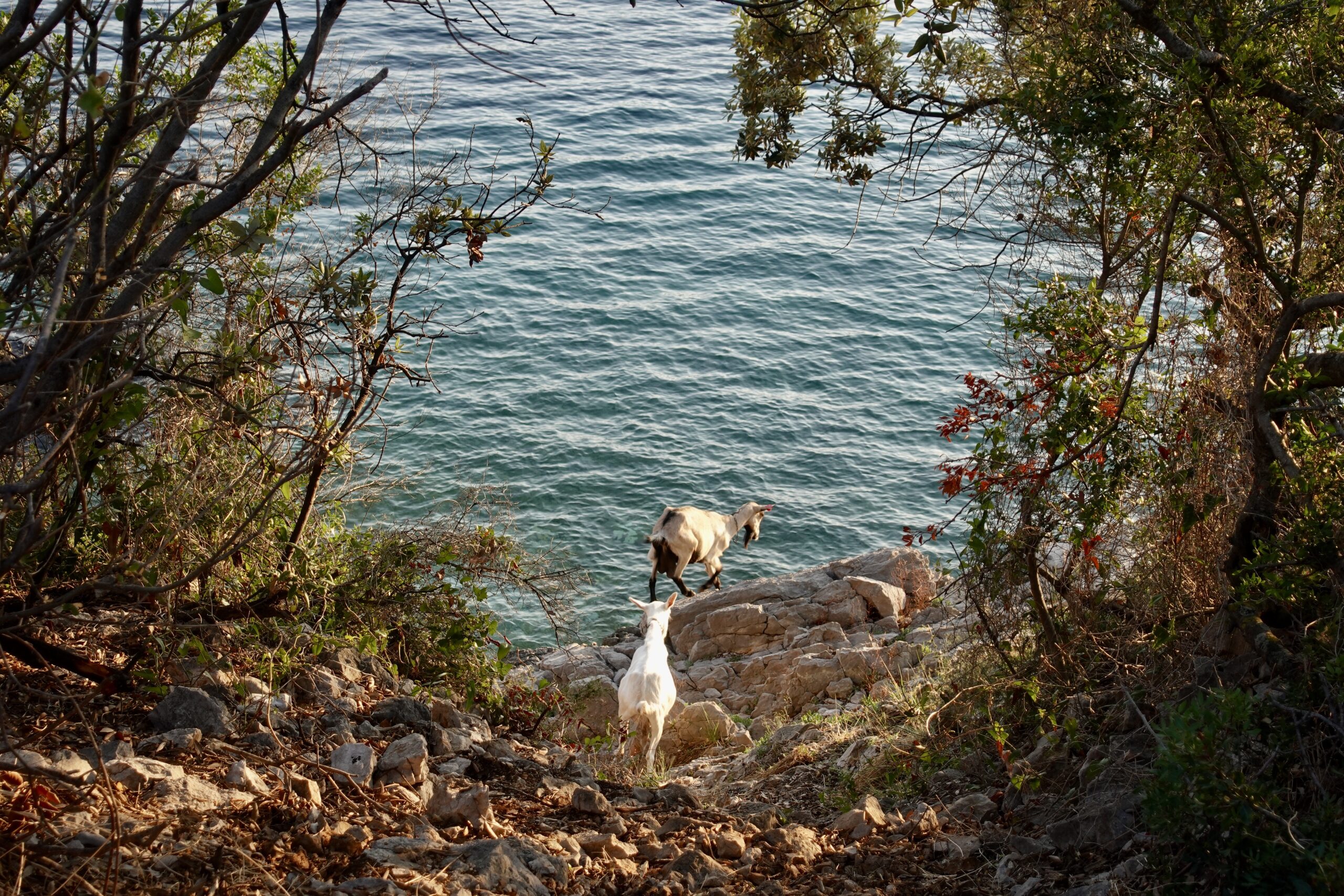
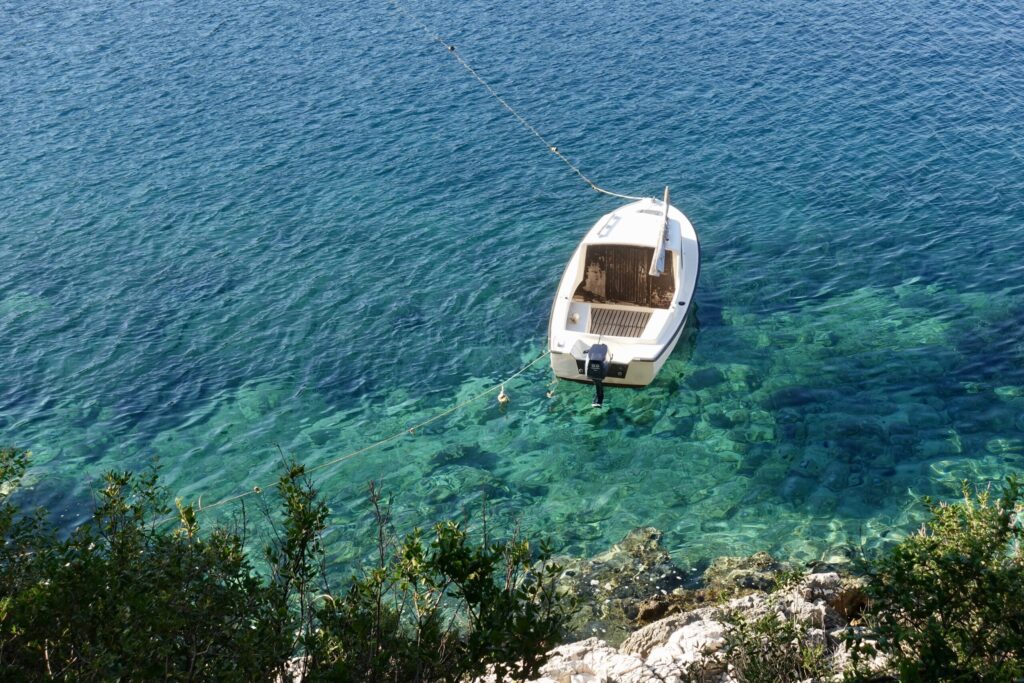


Leave a Reply